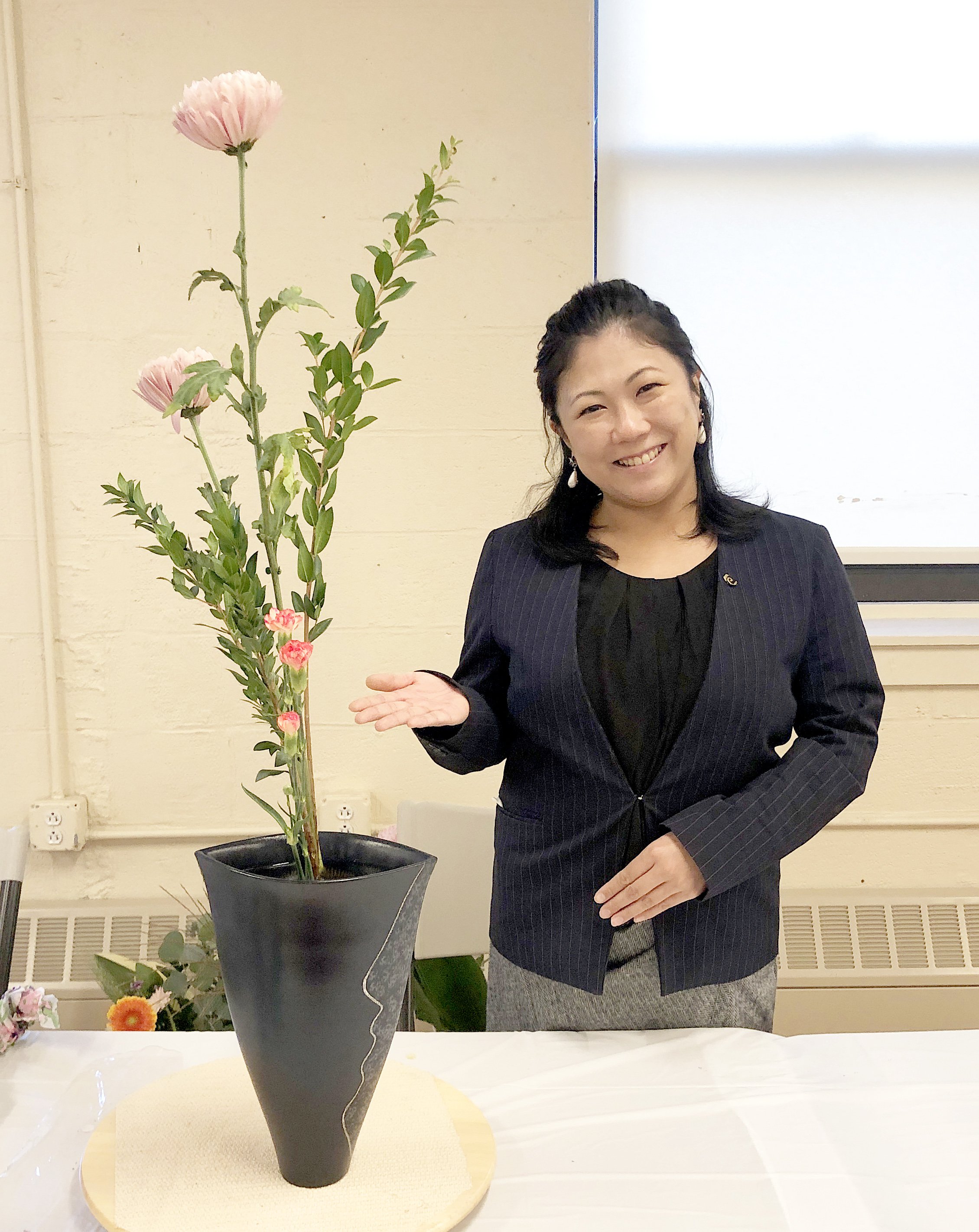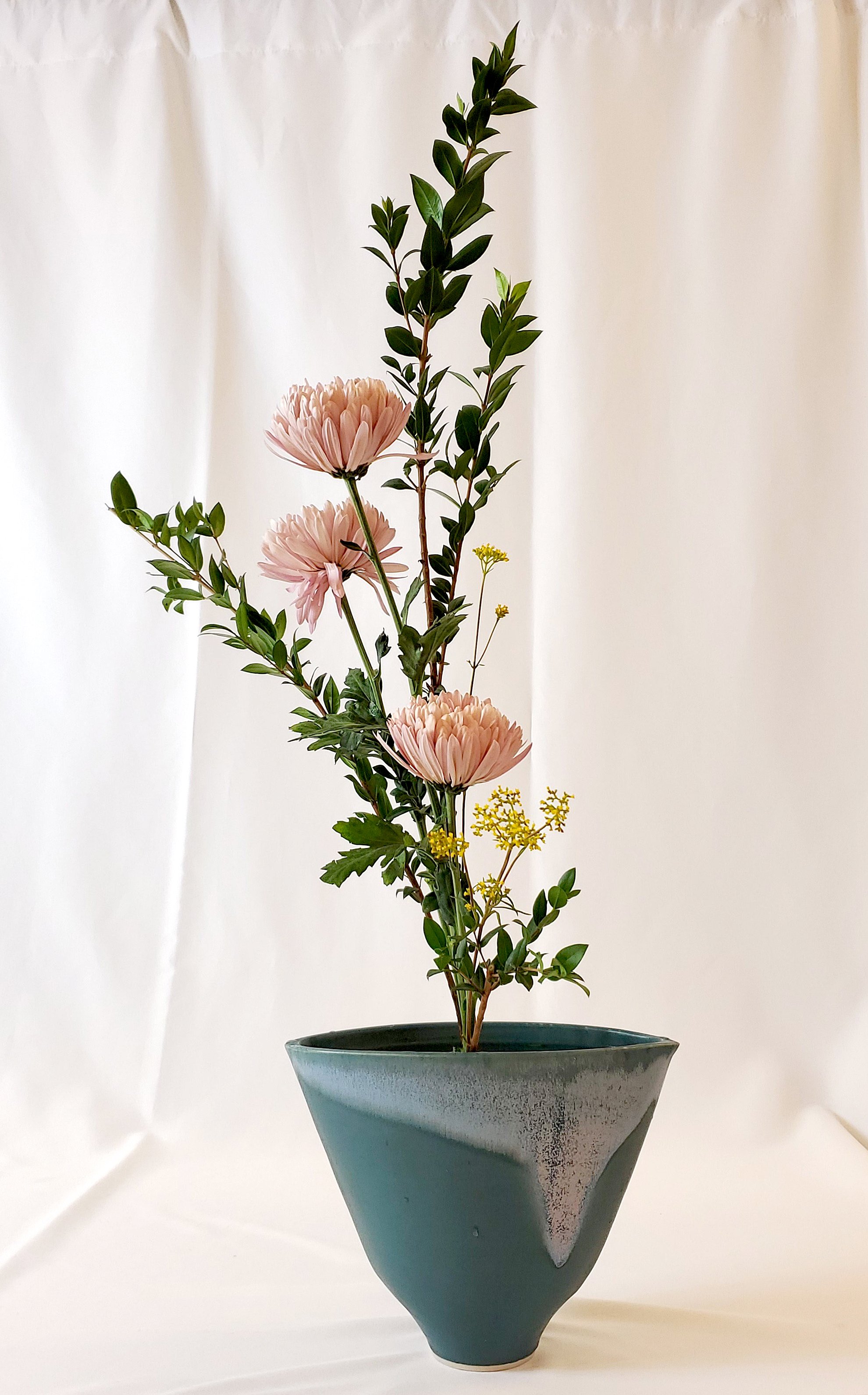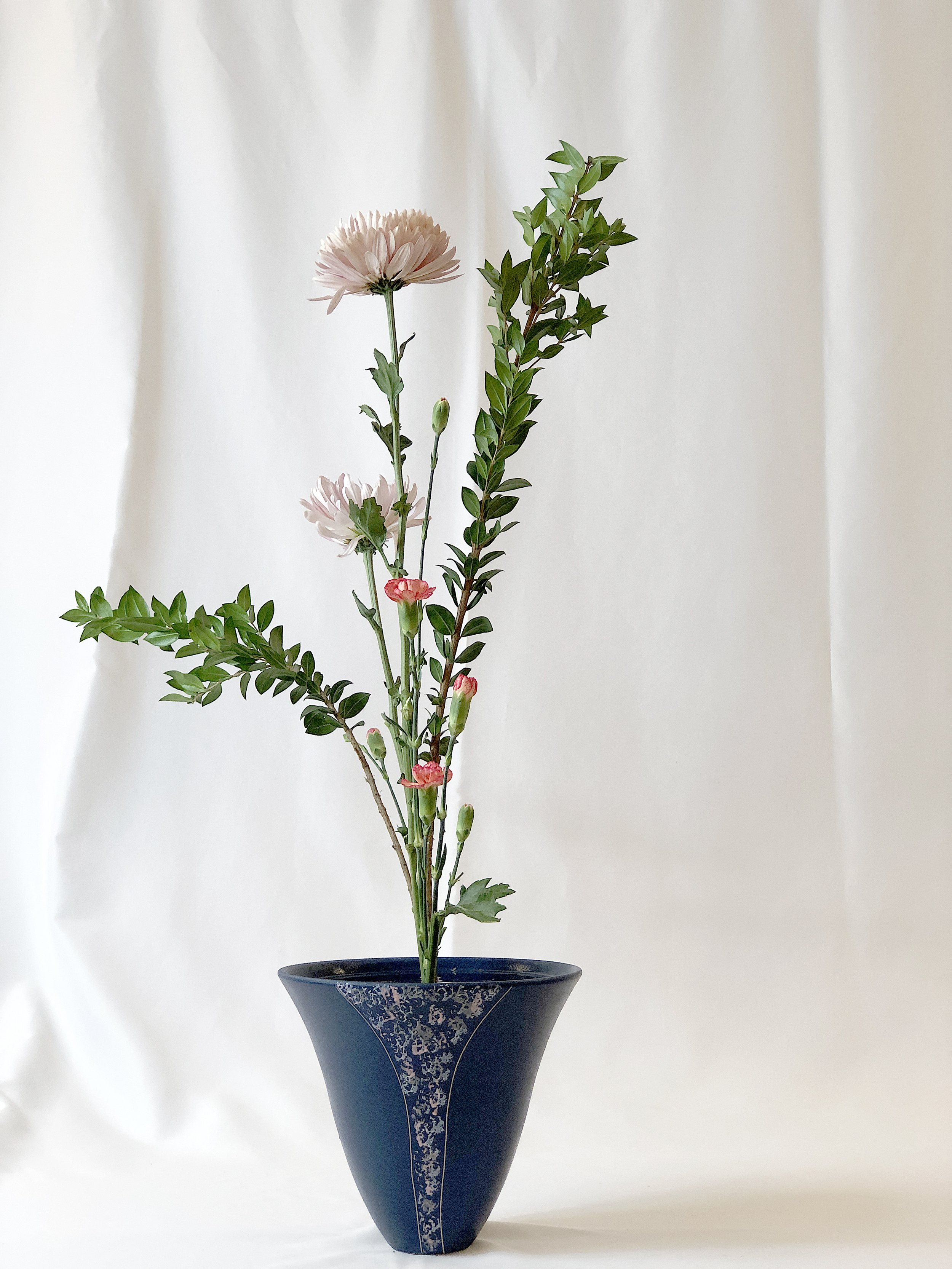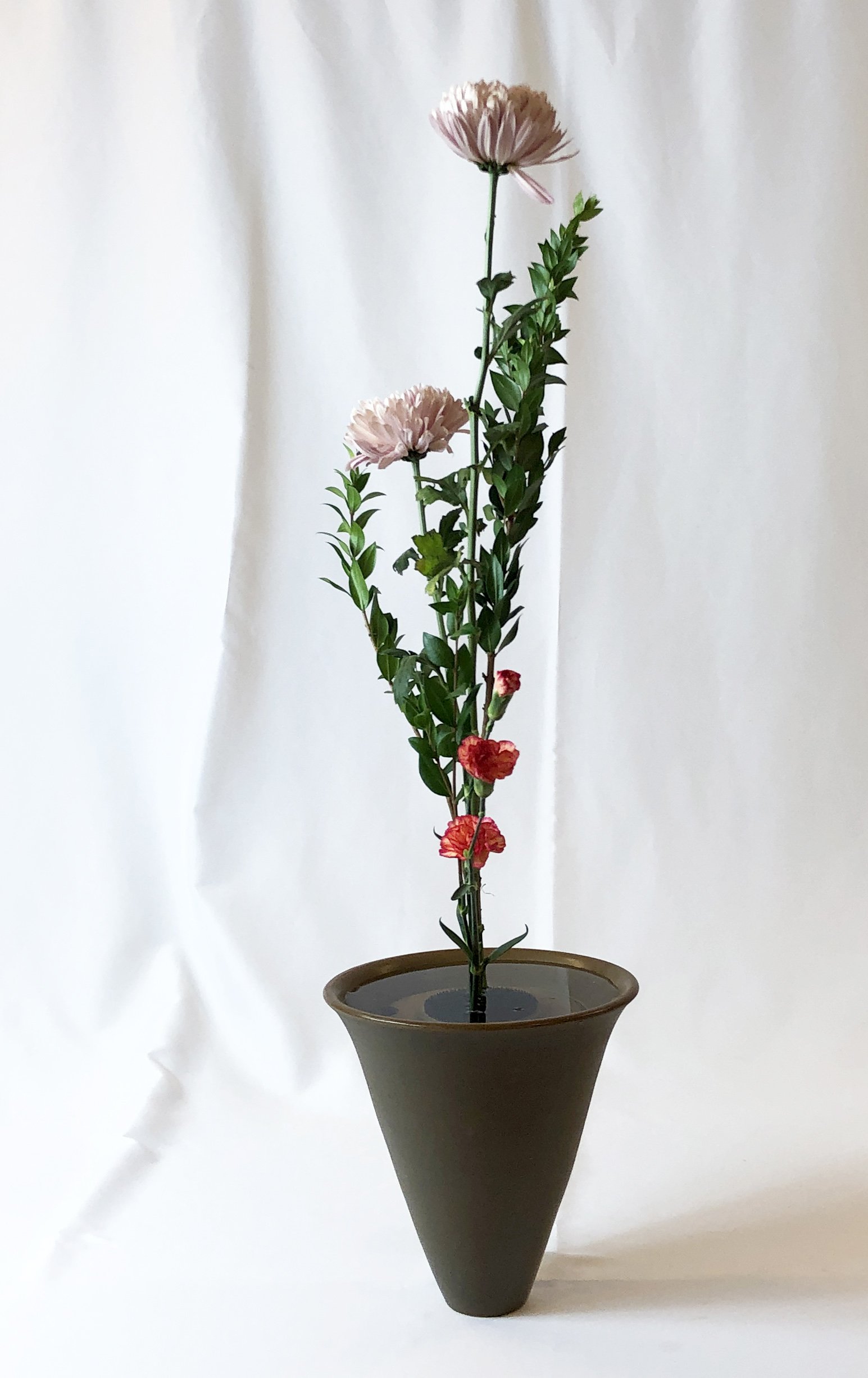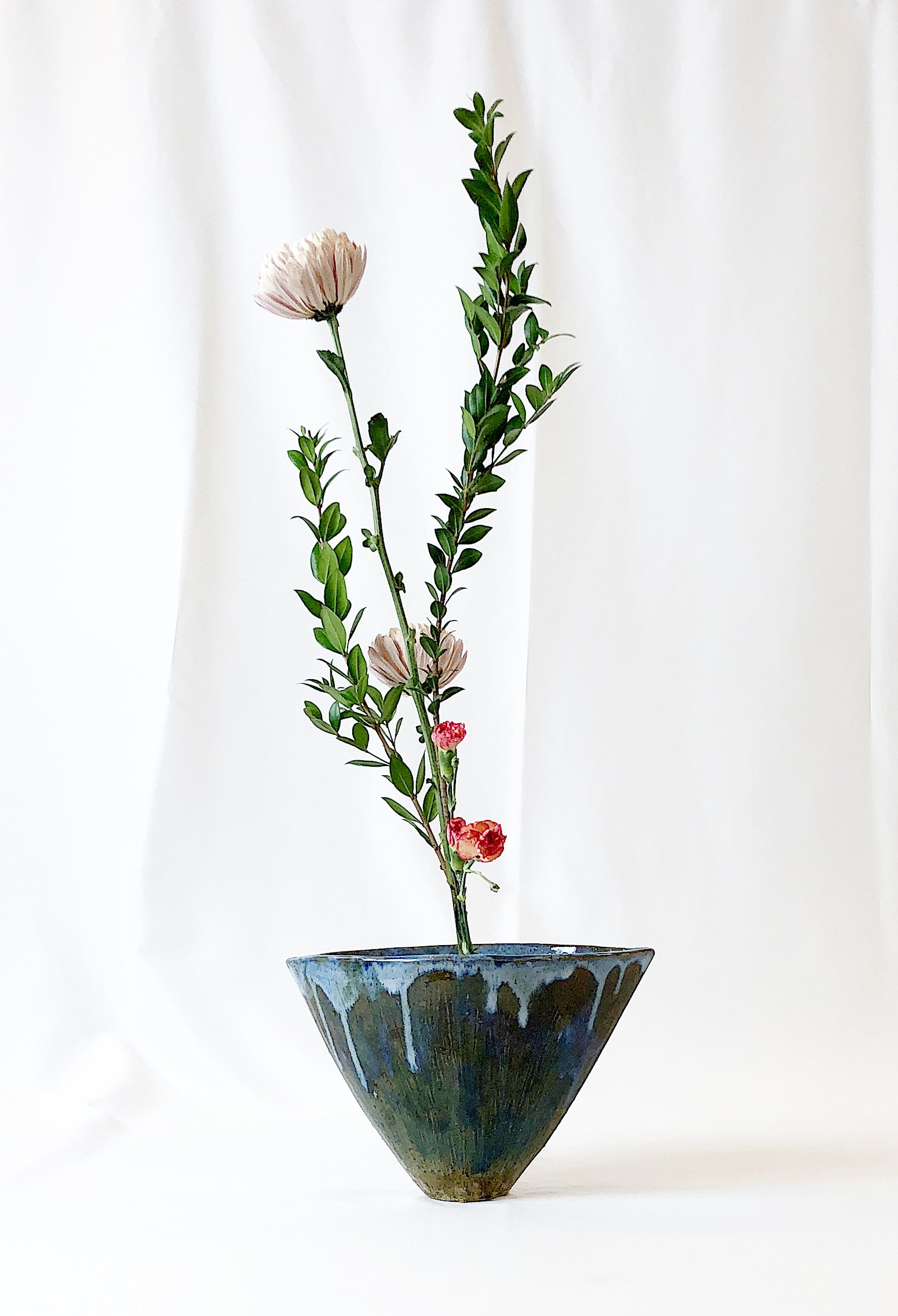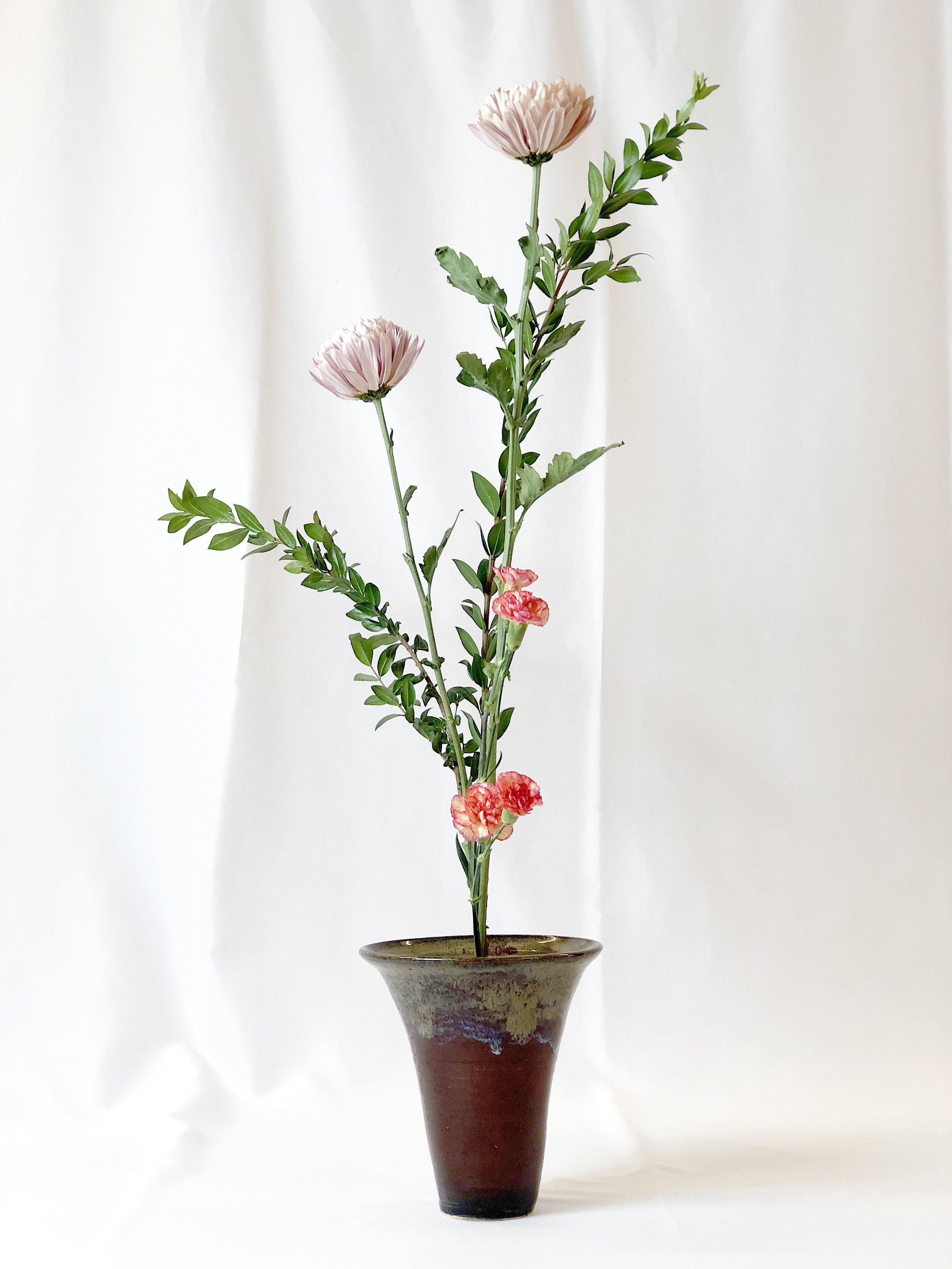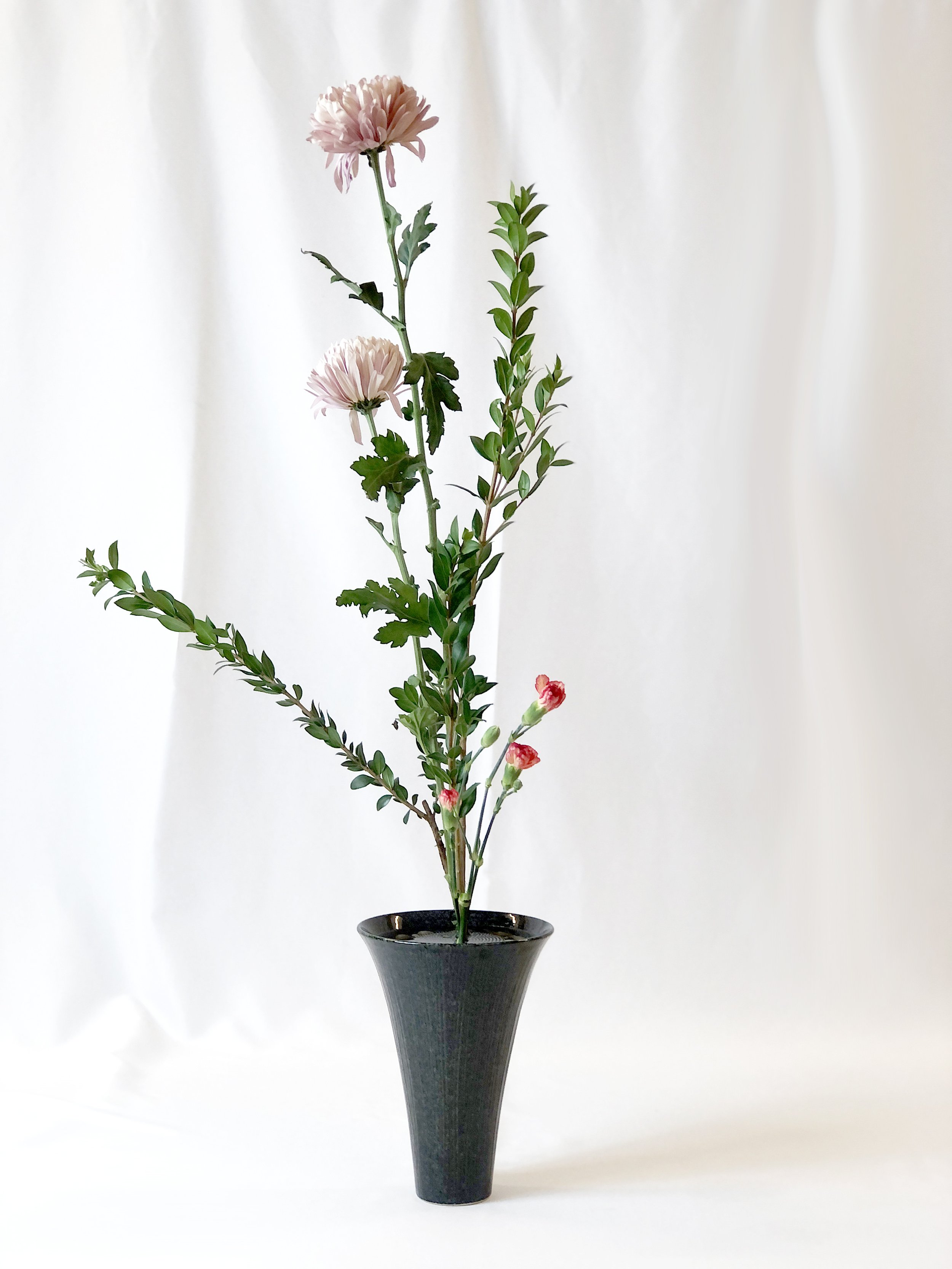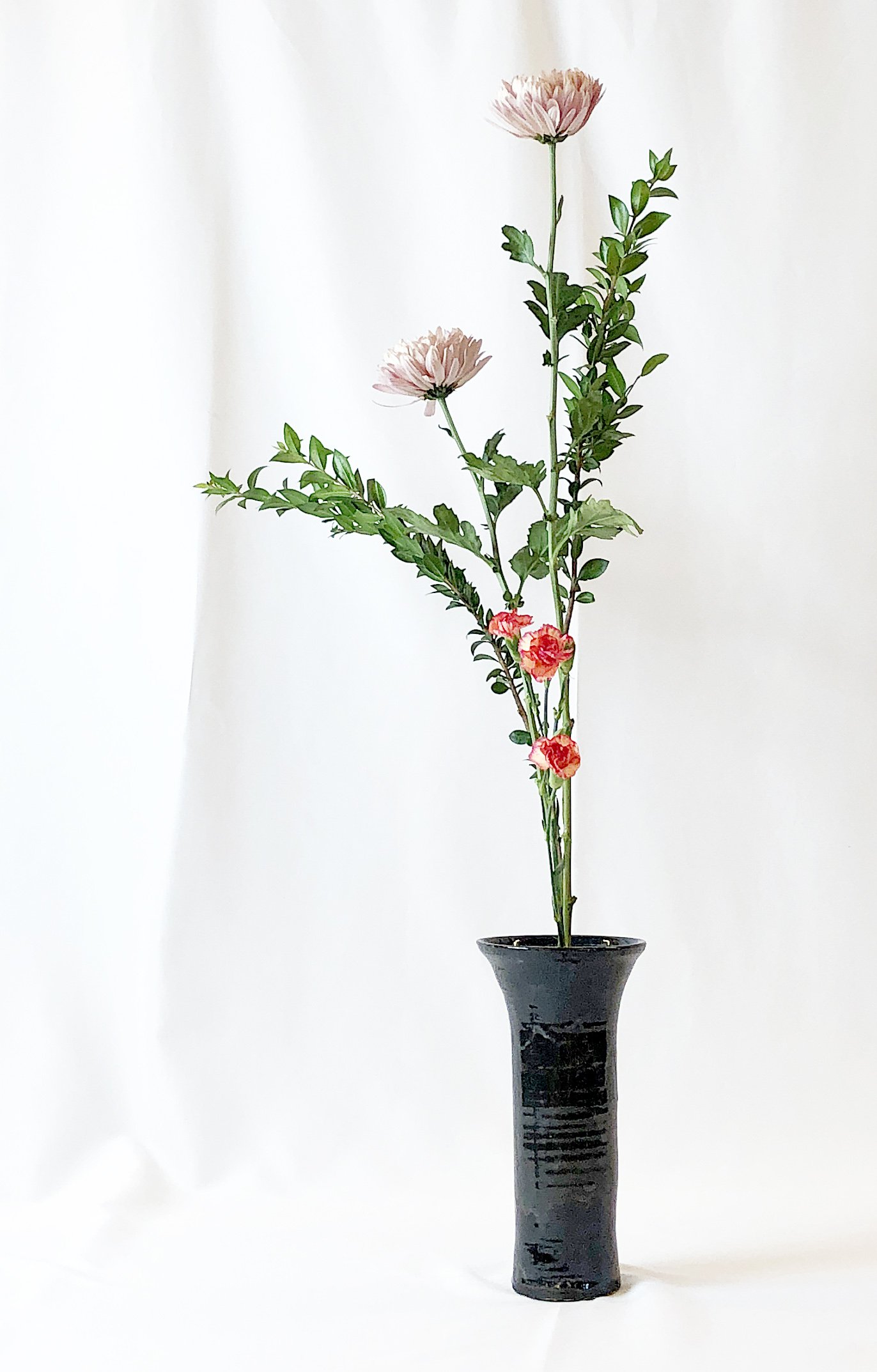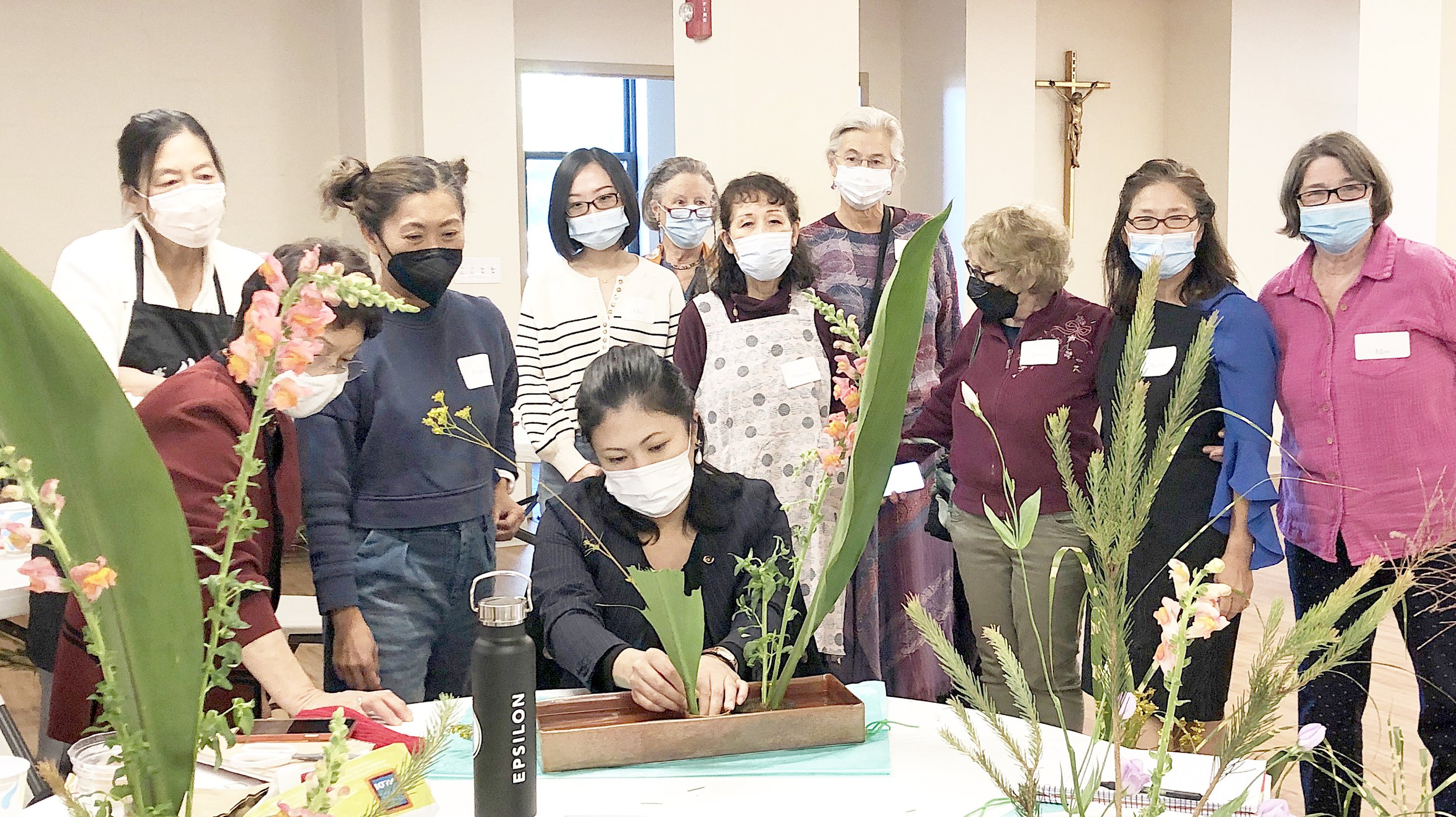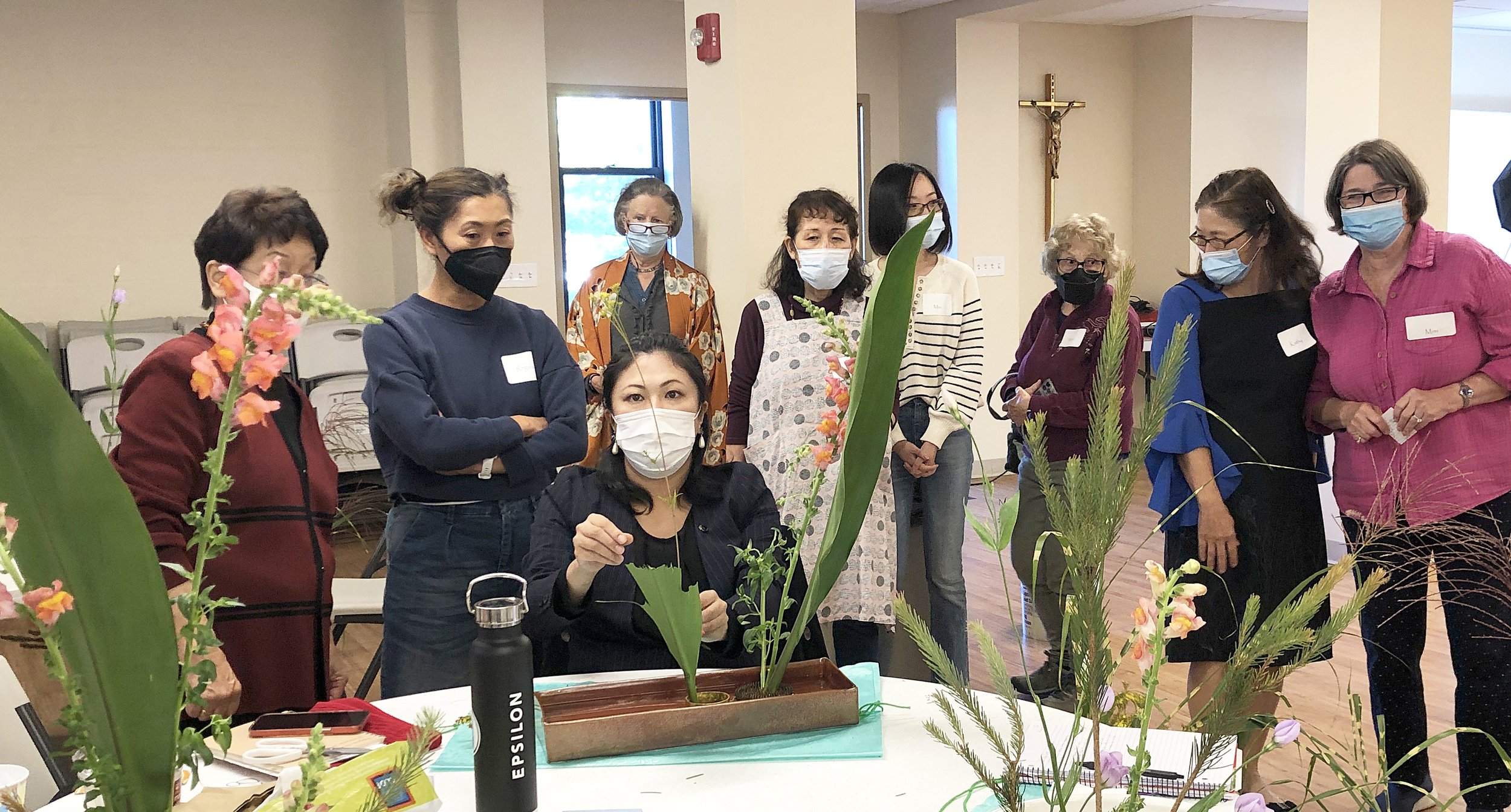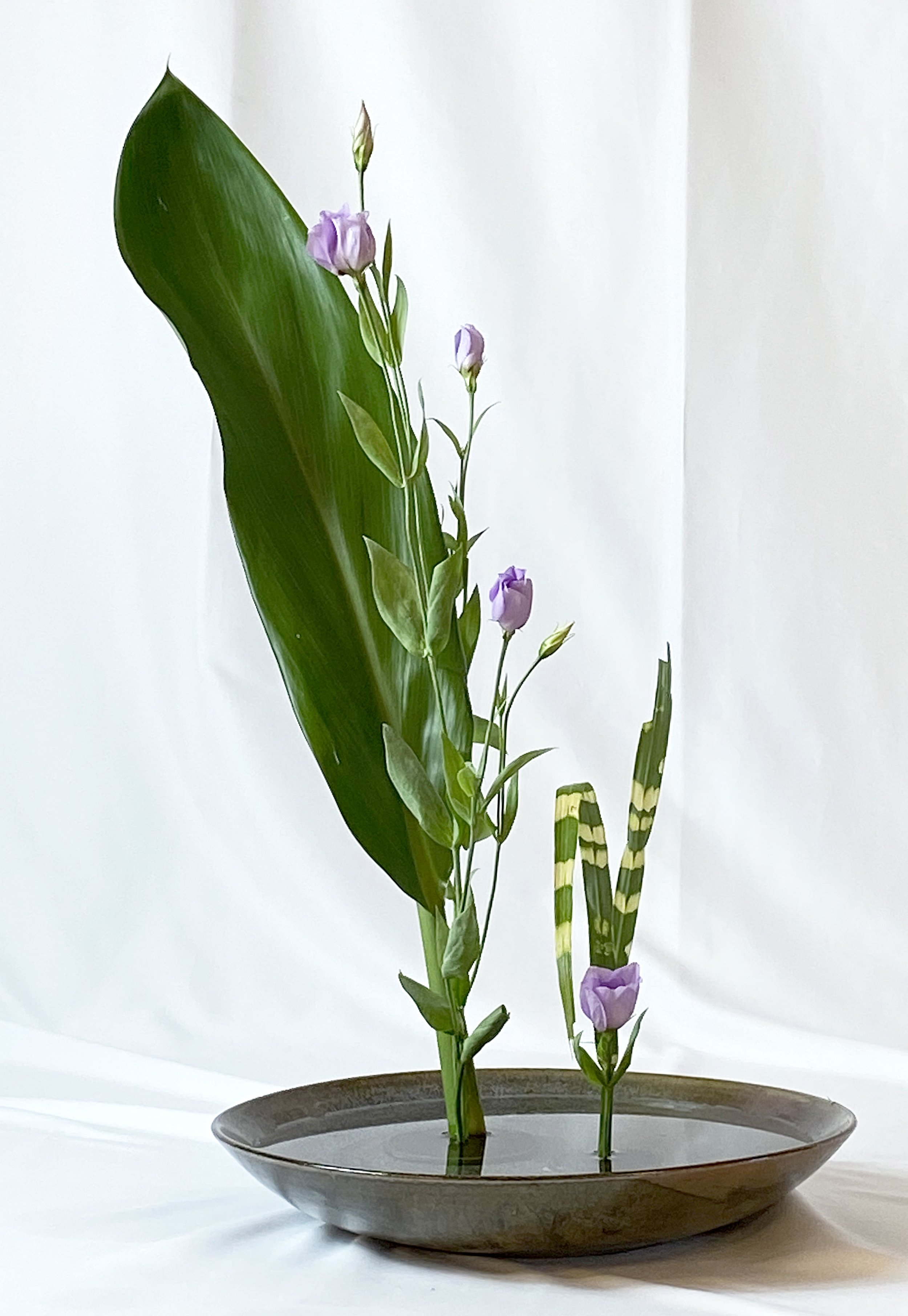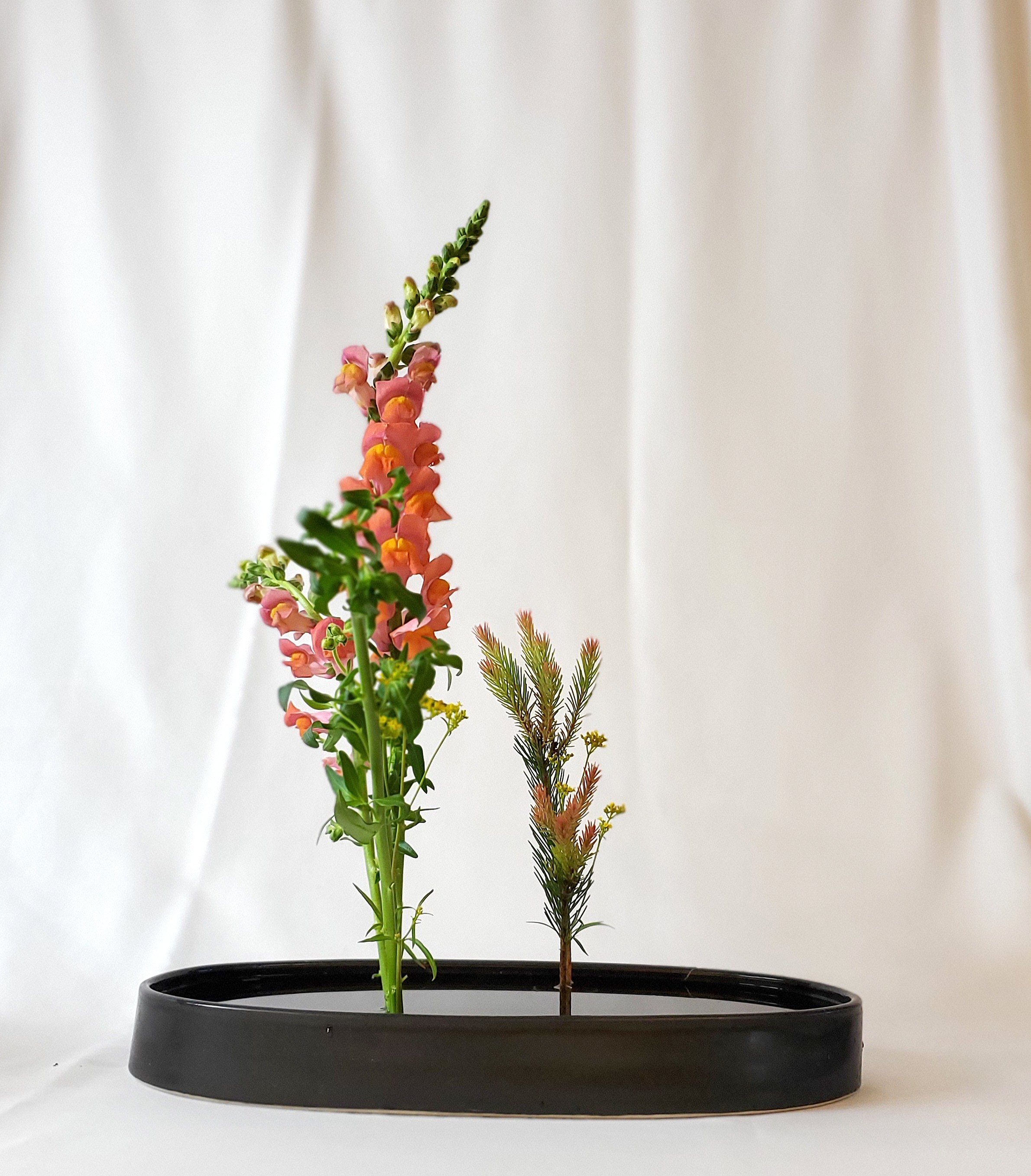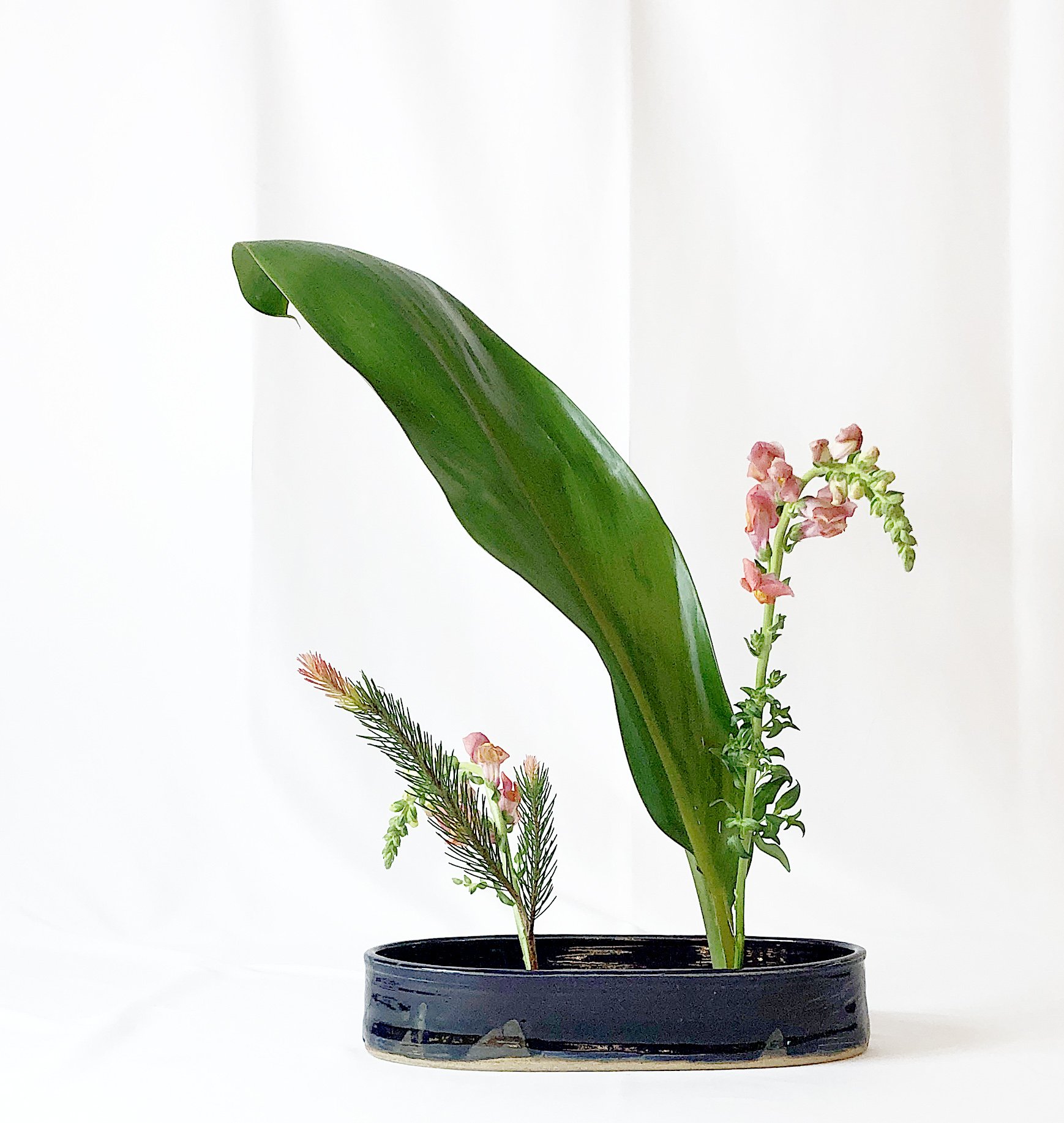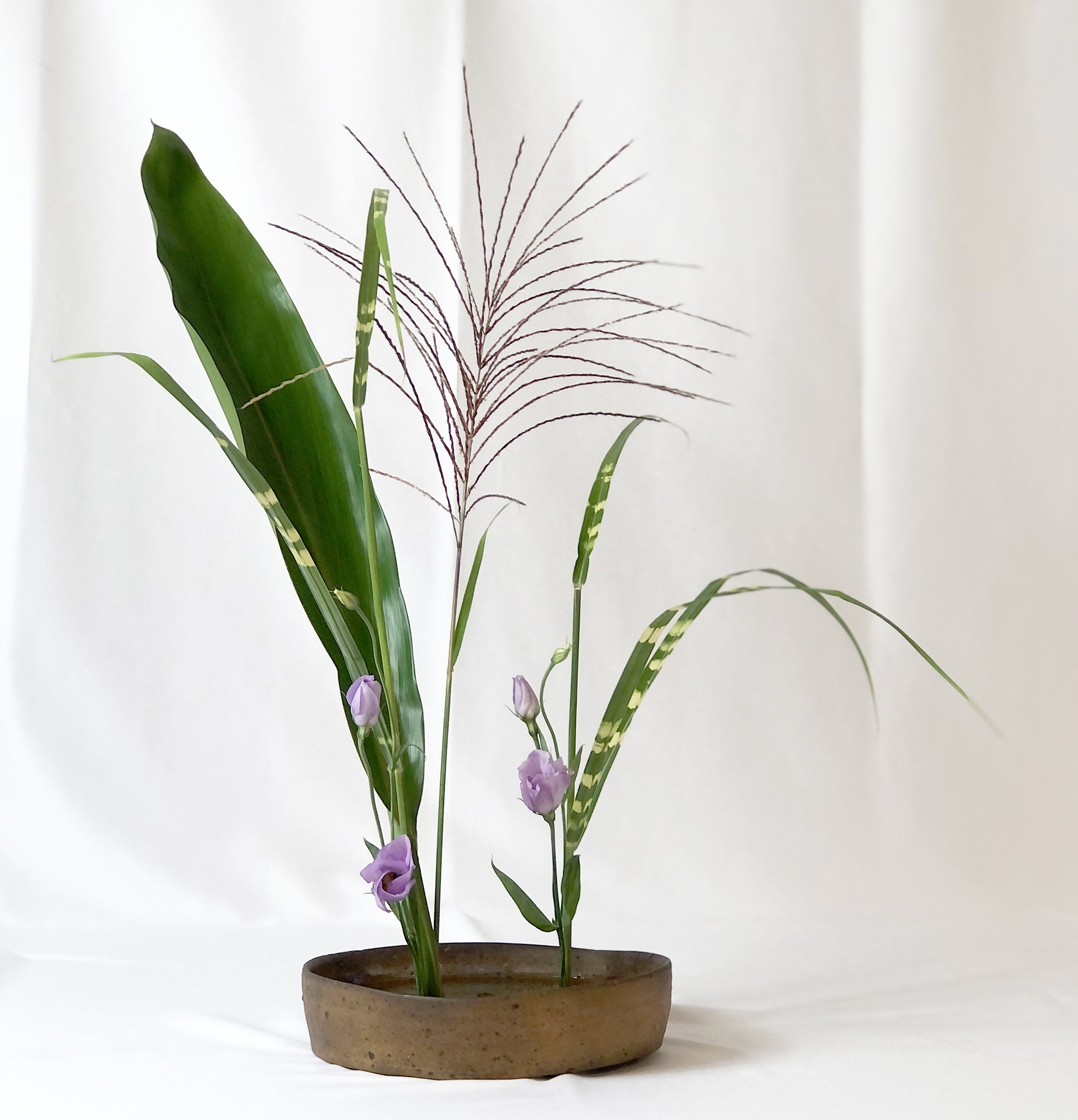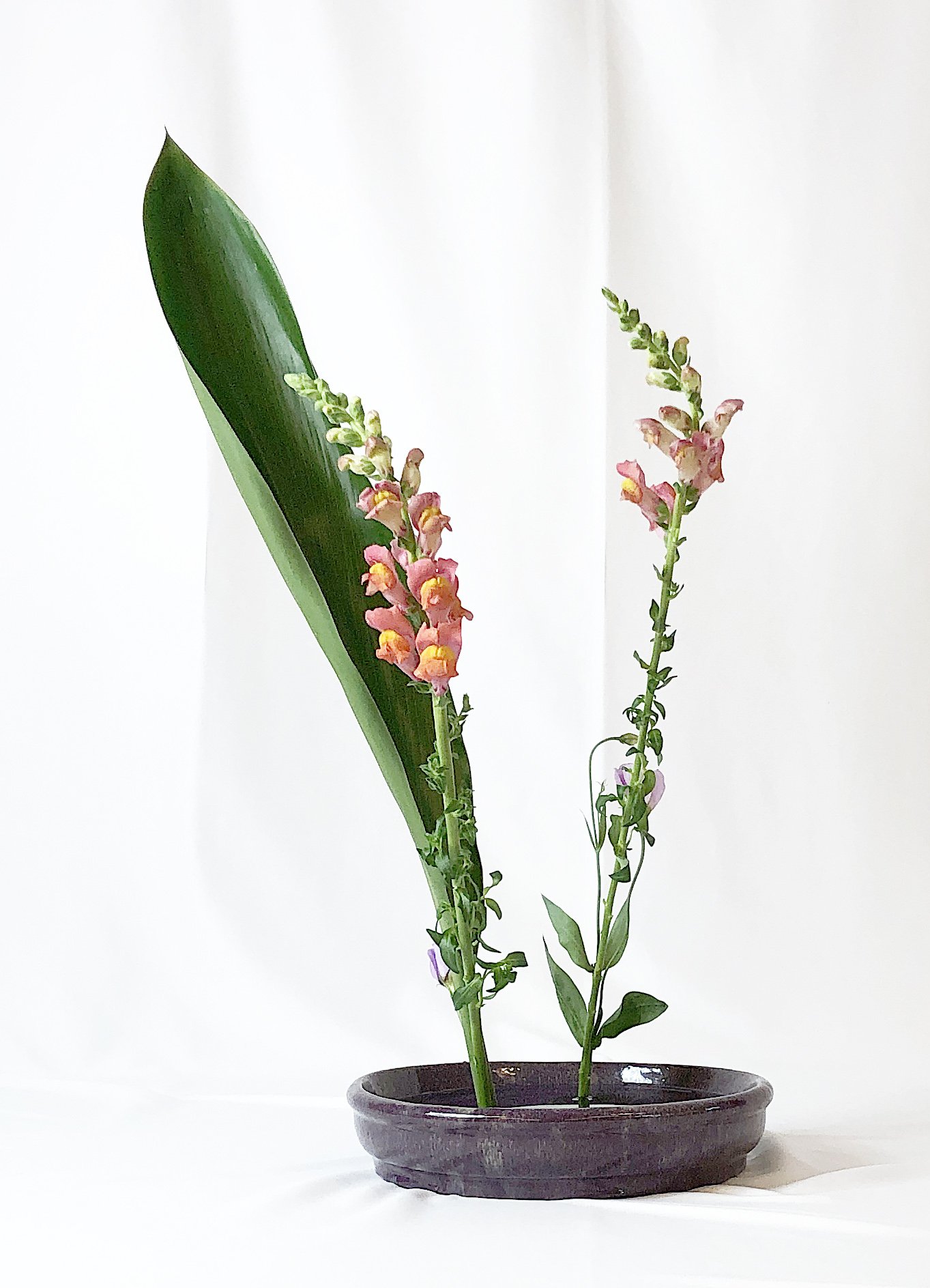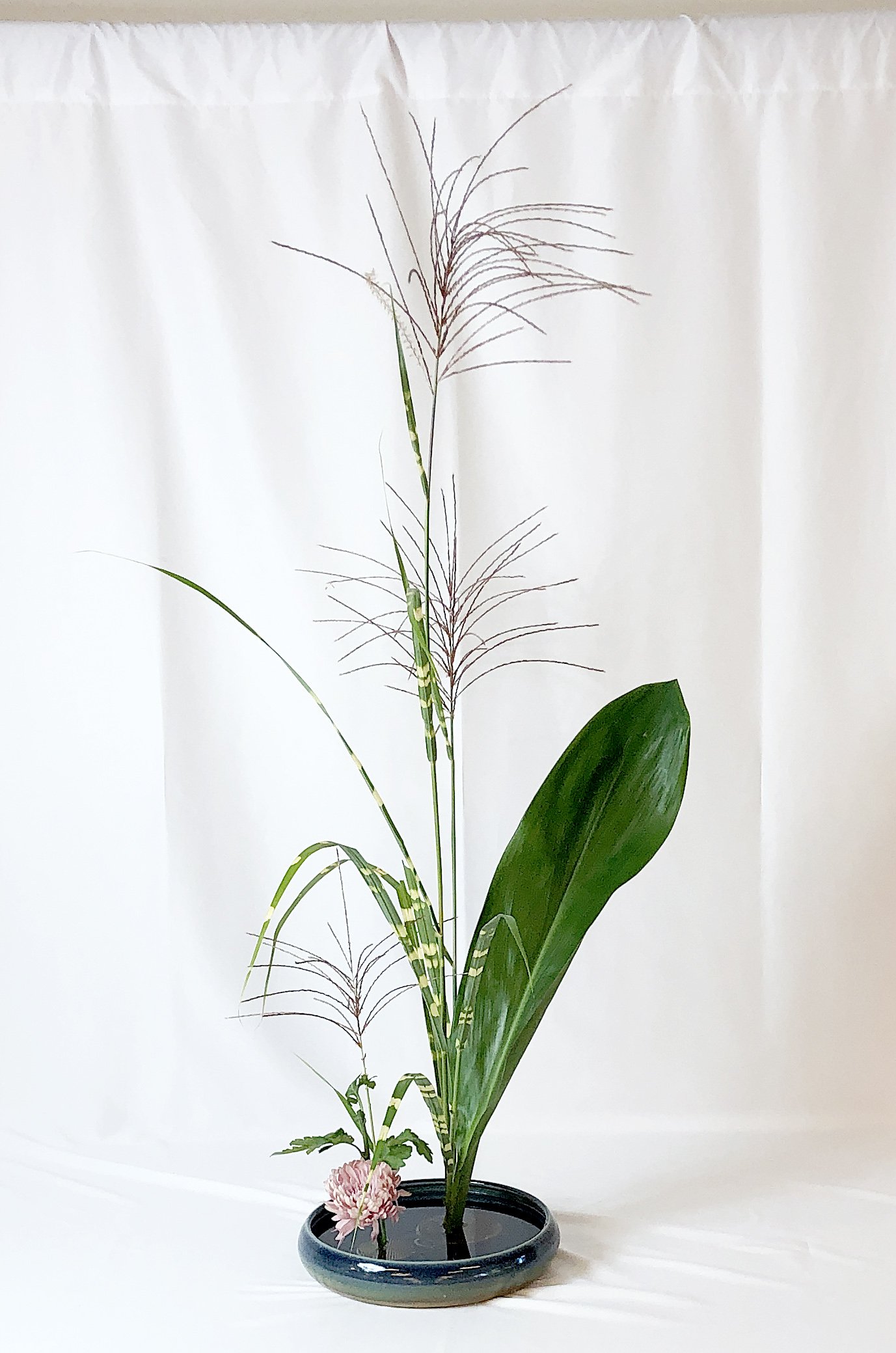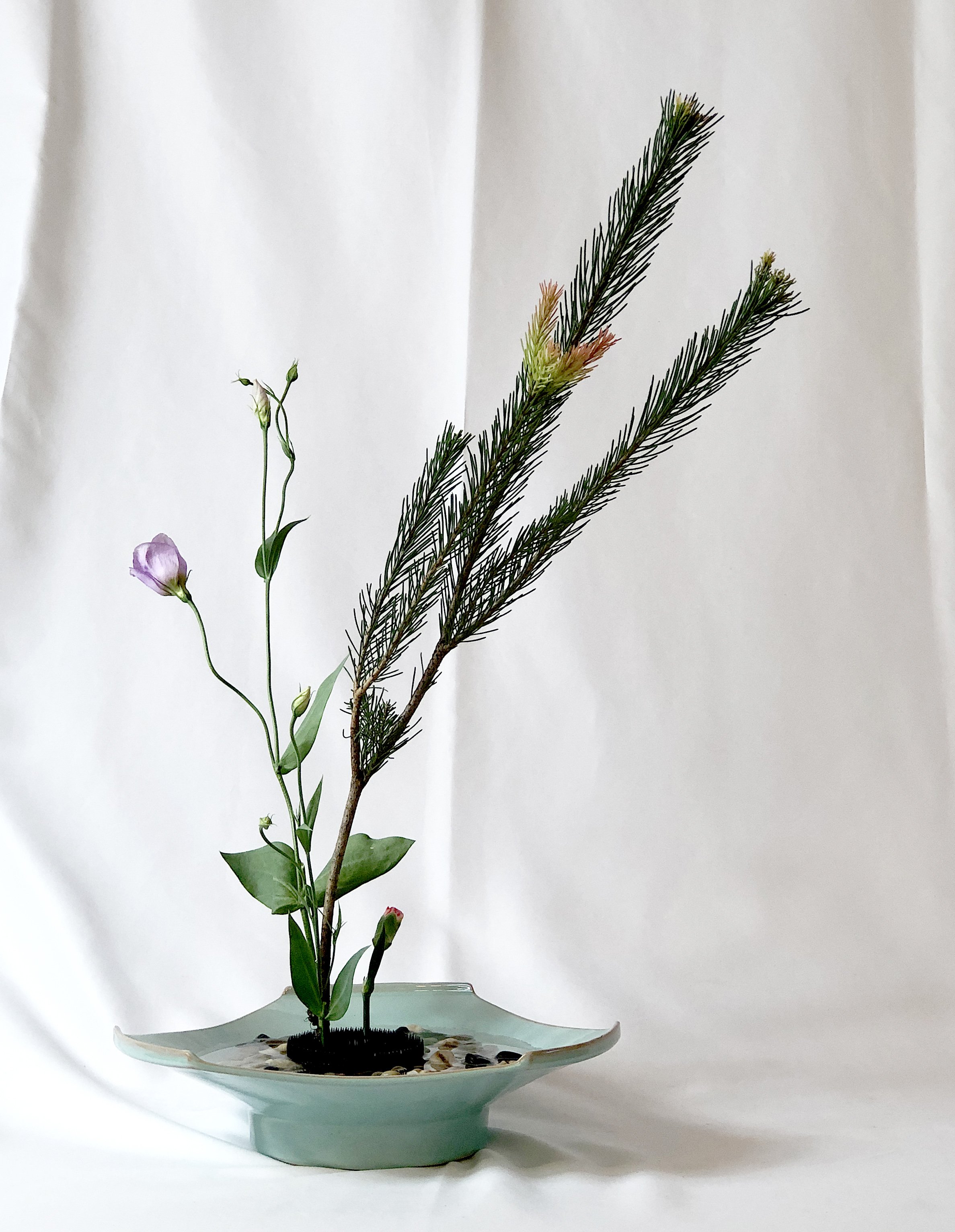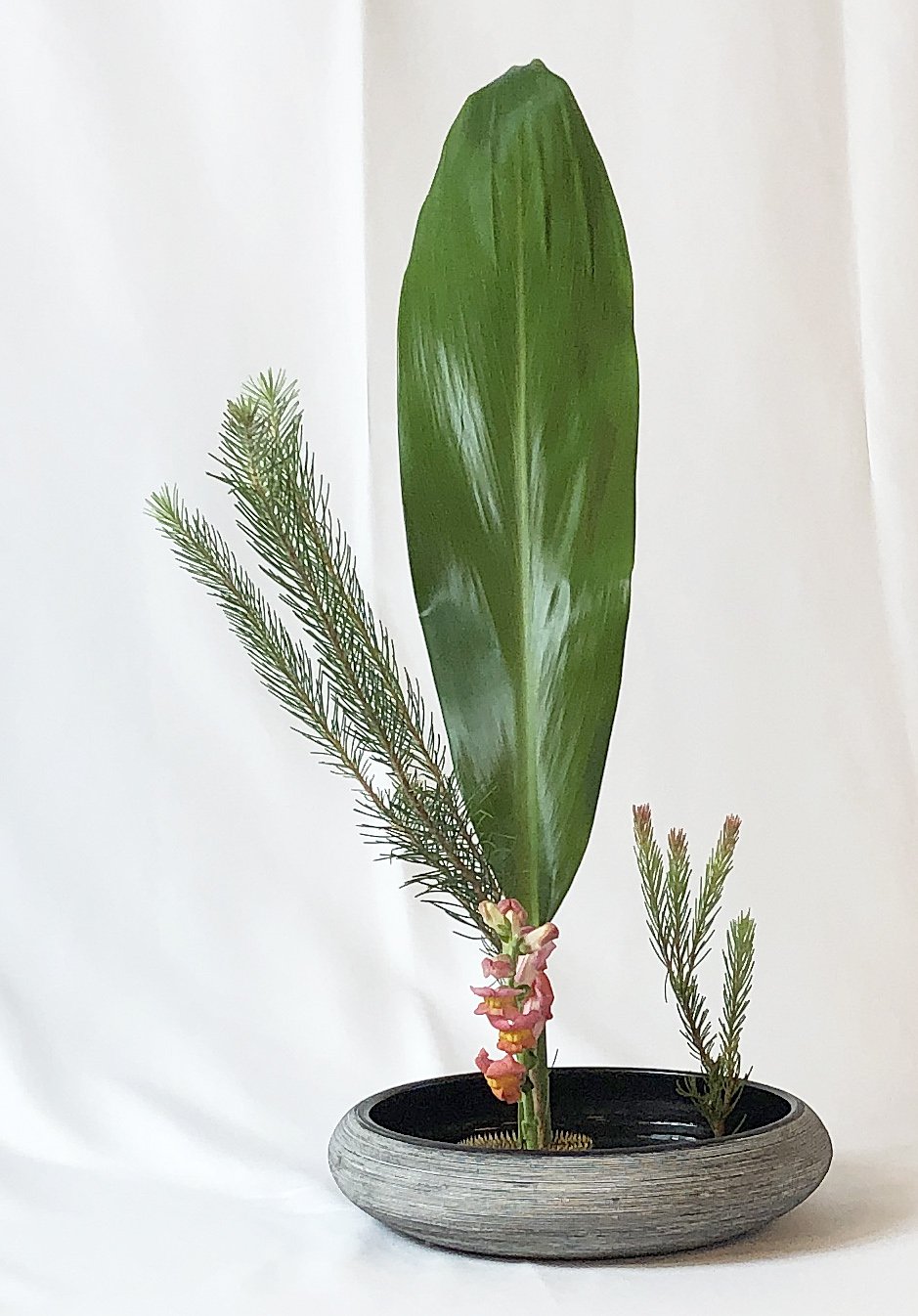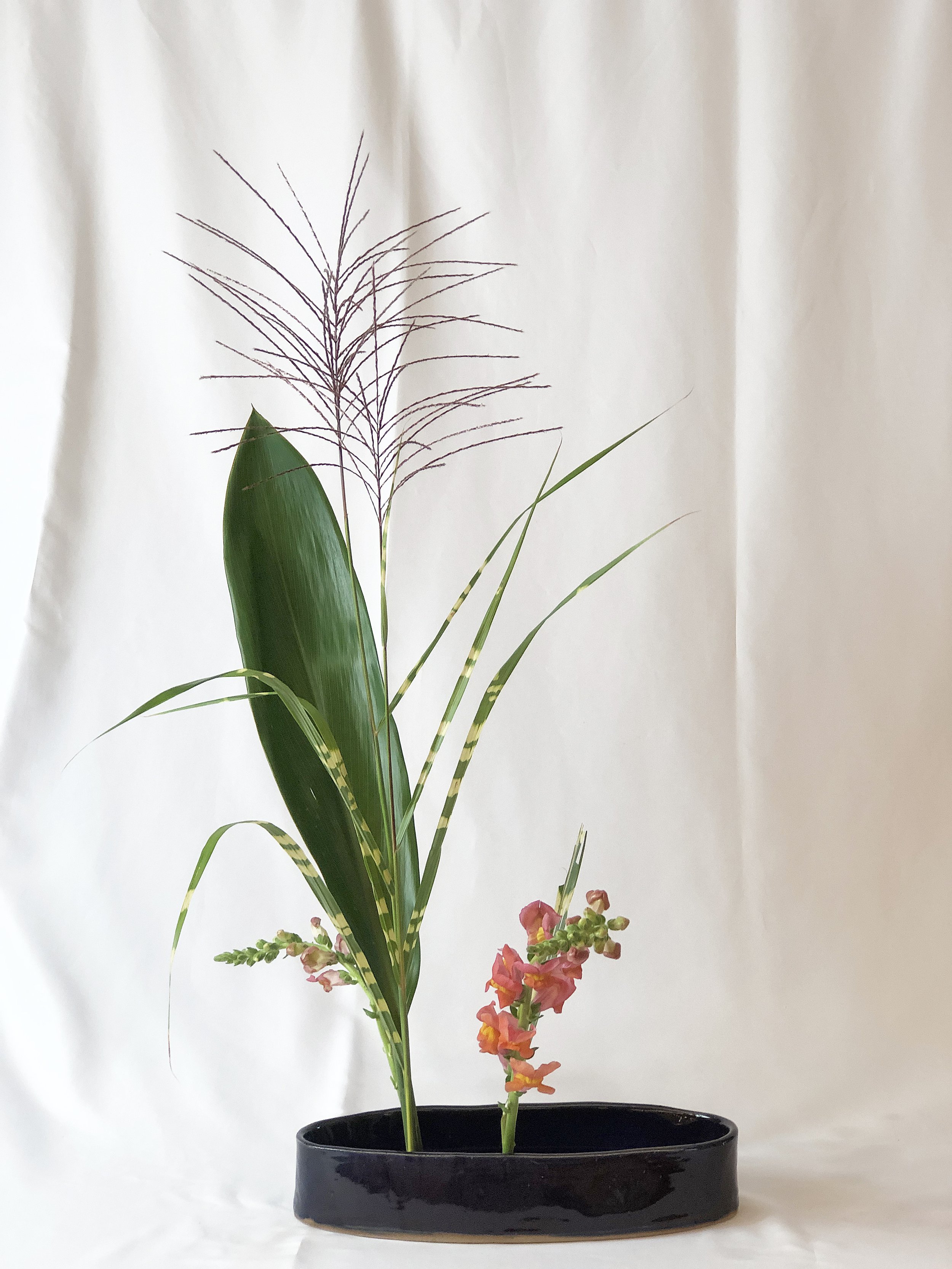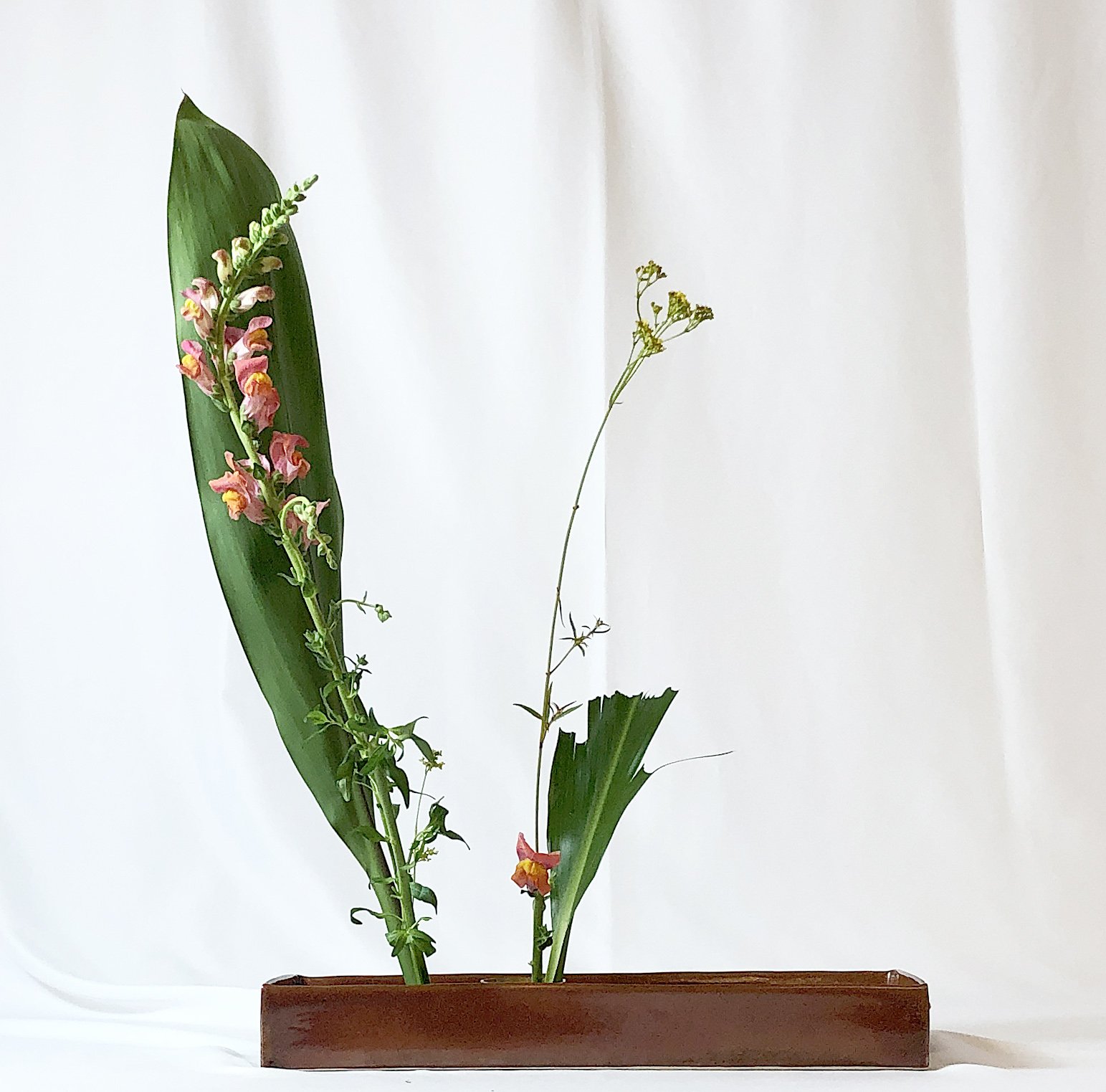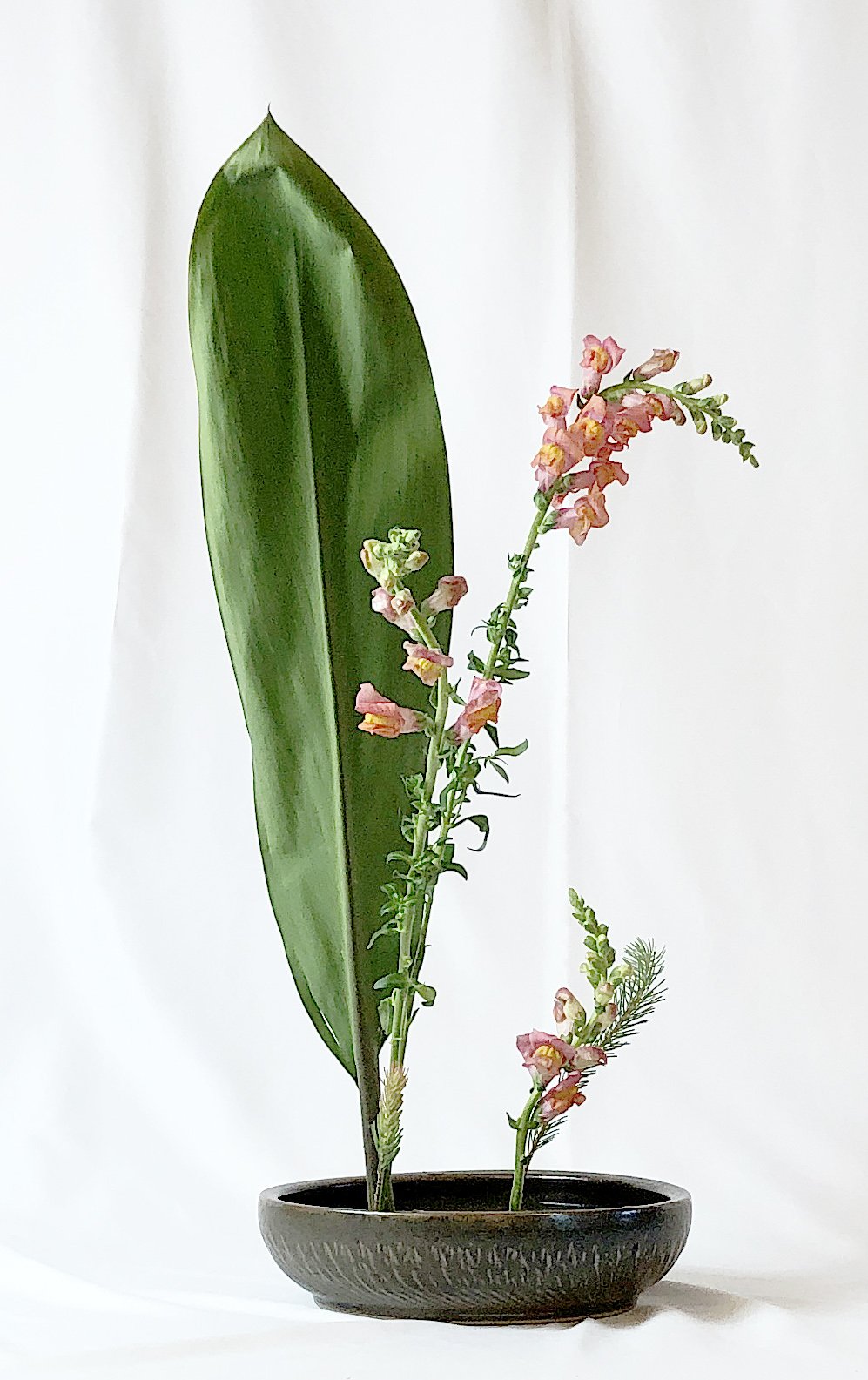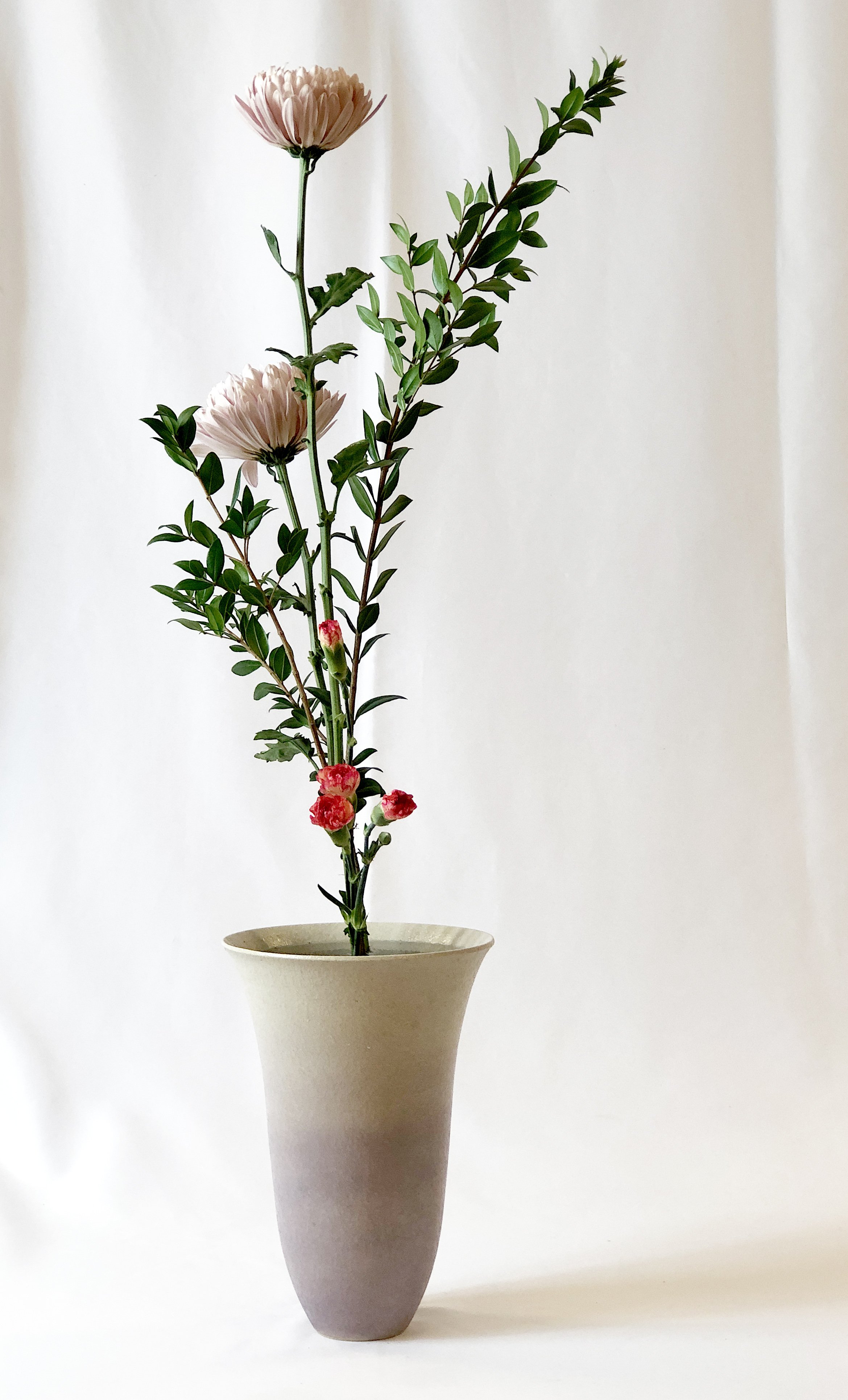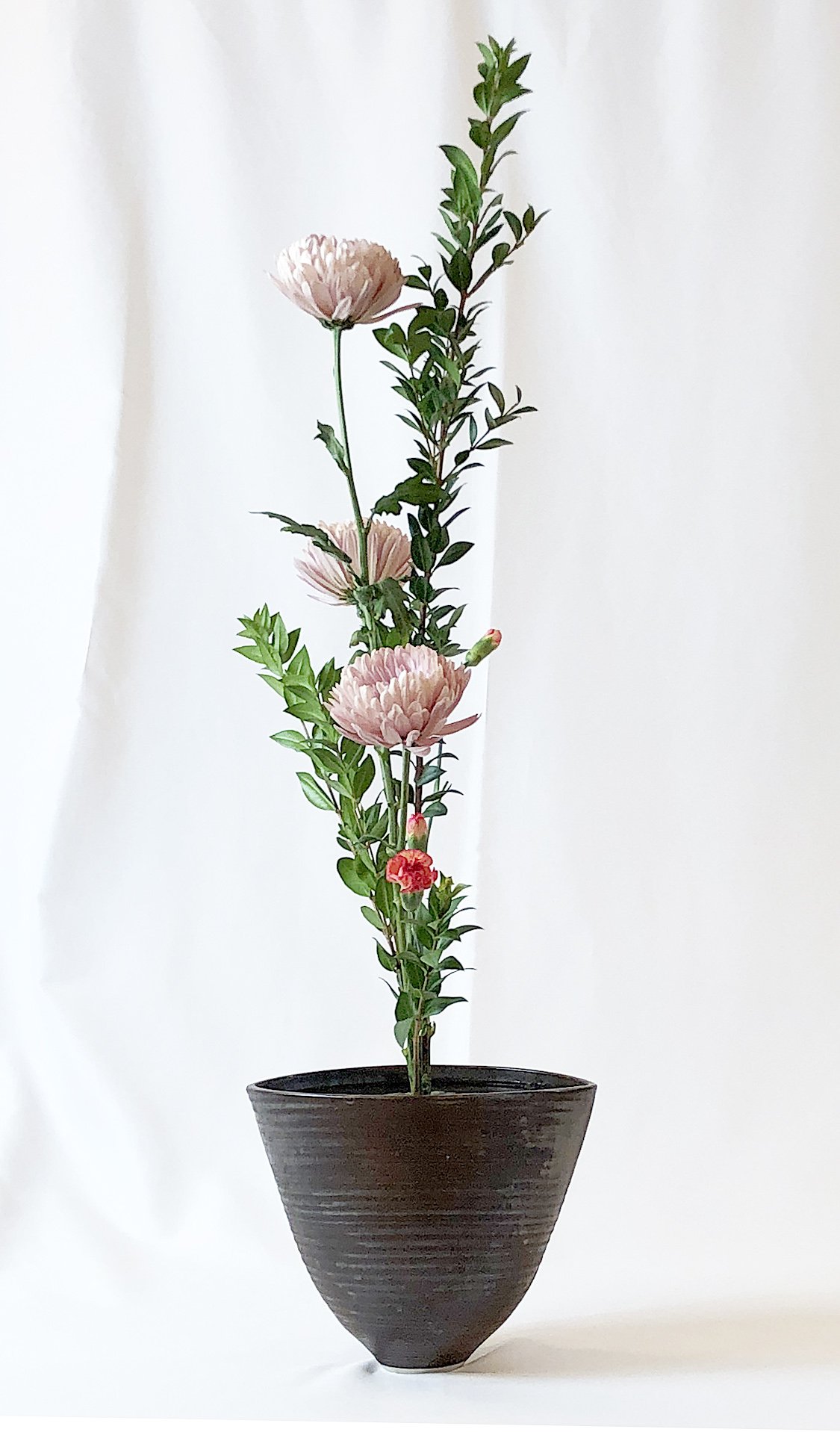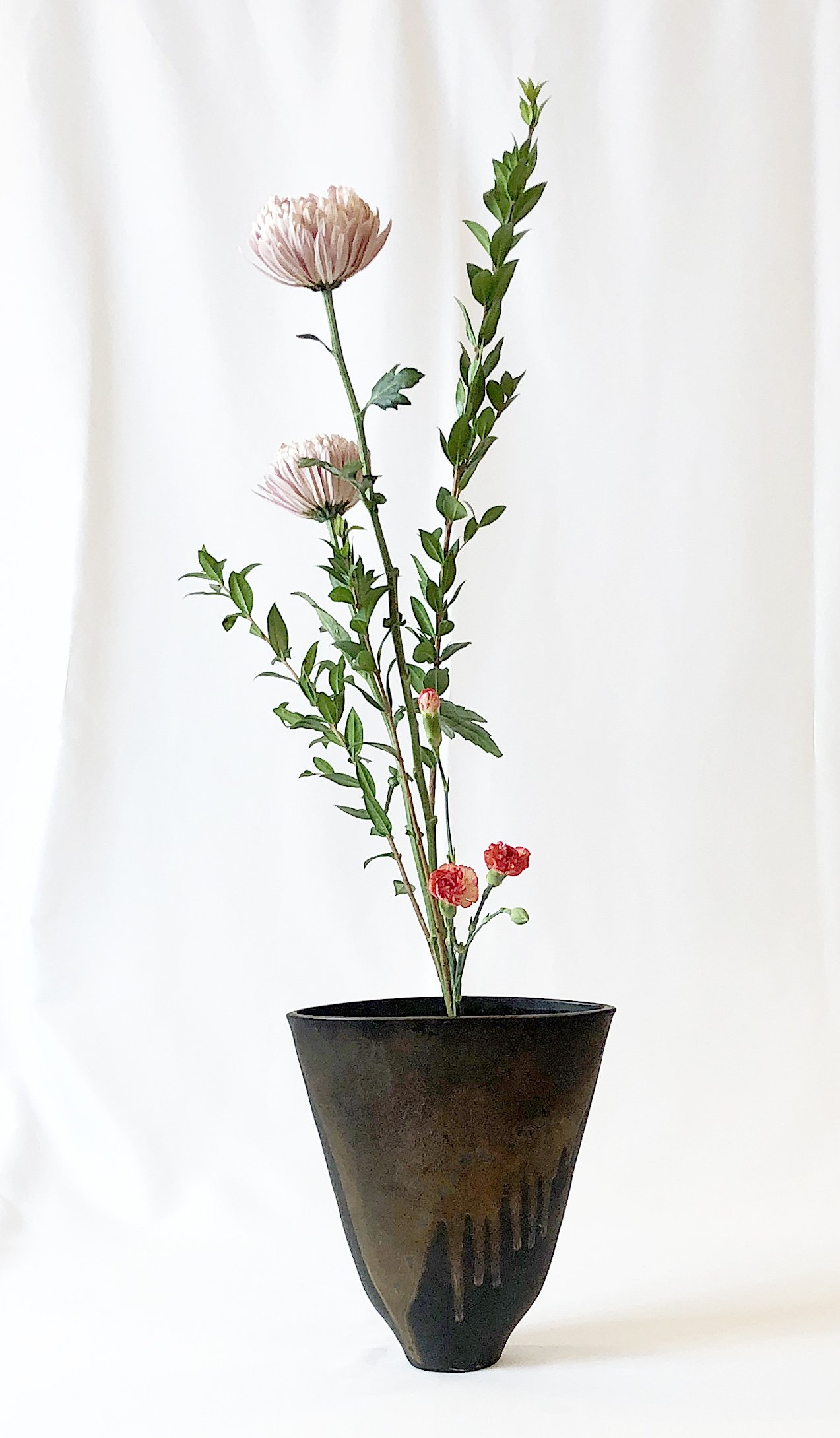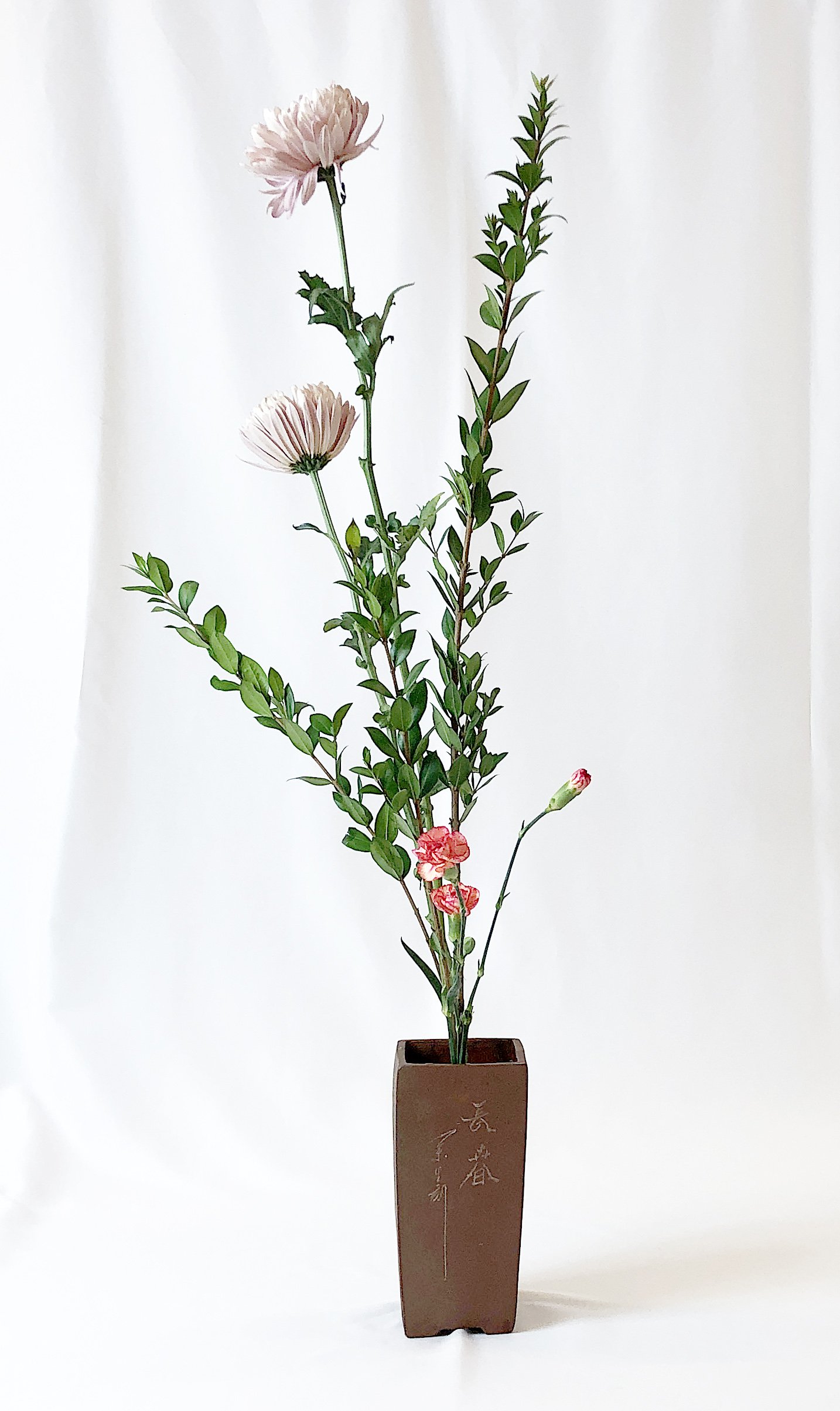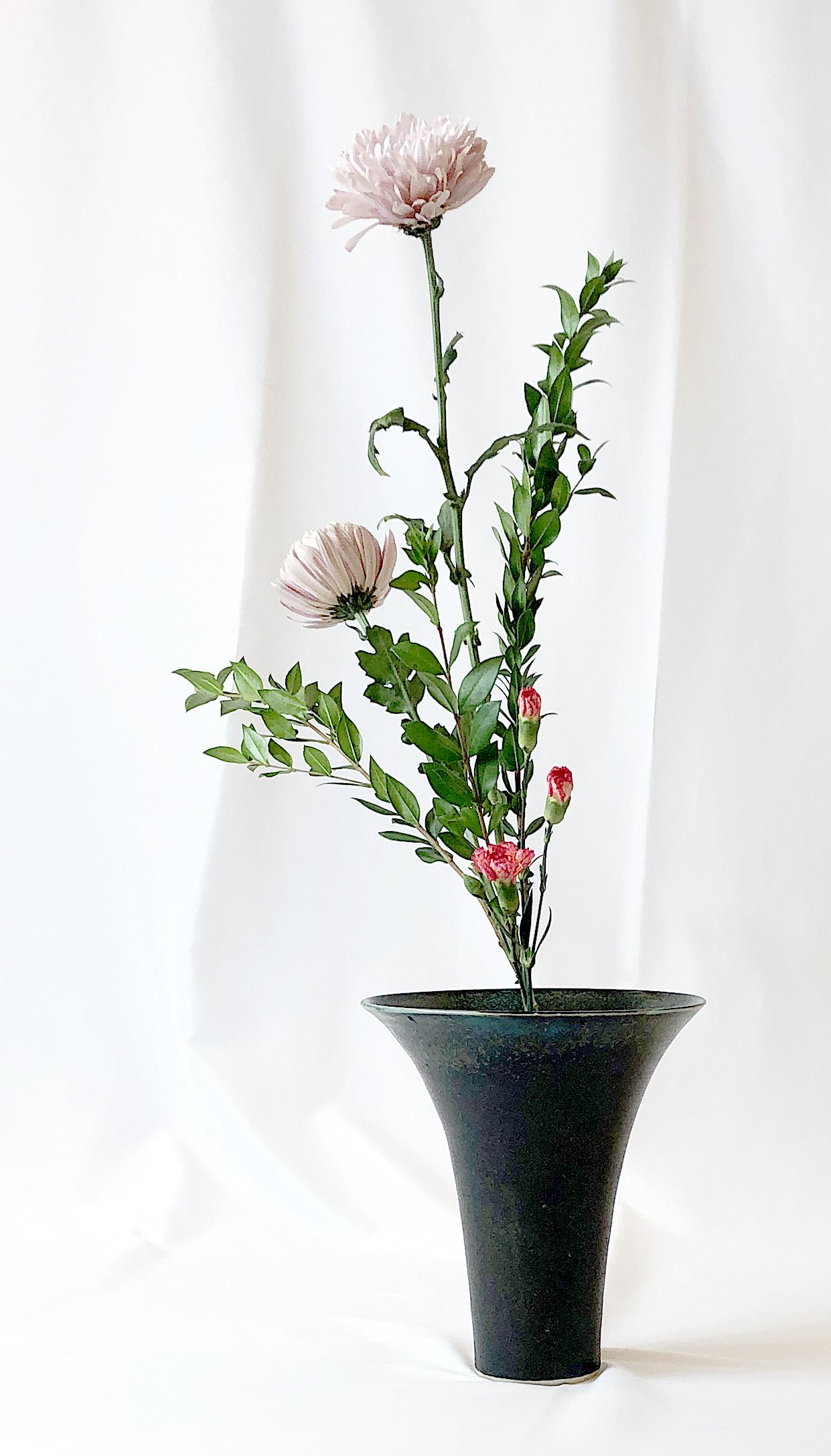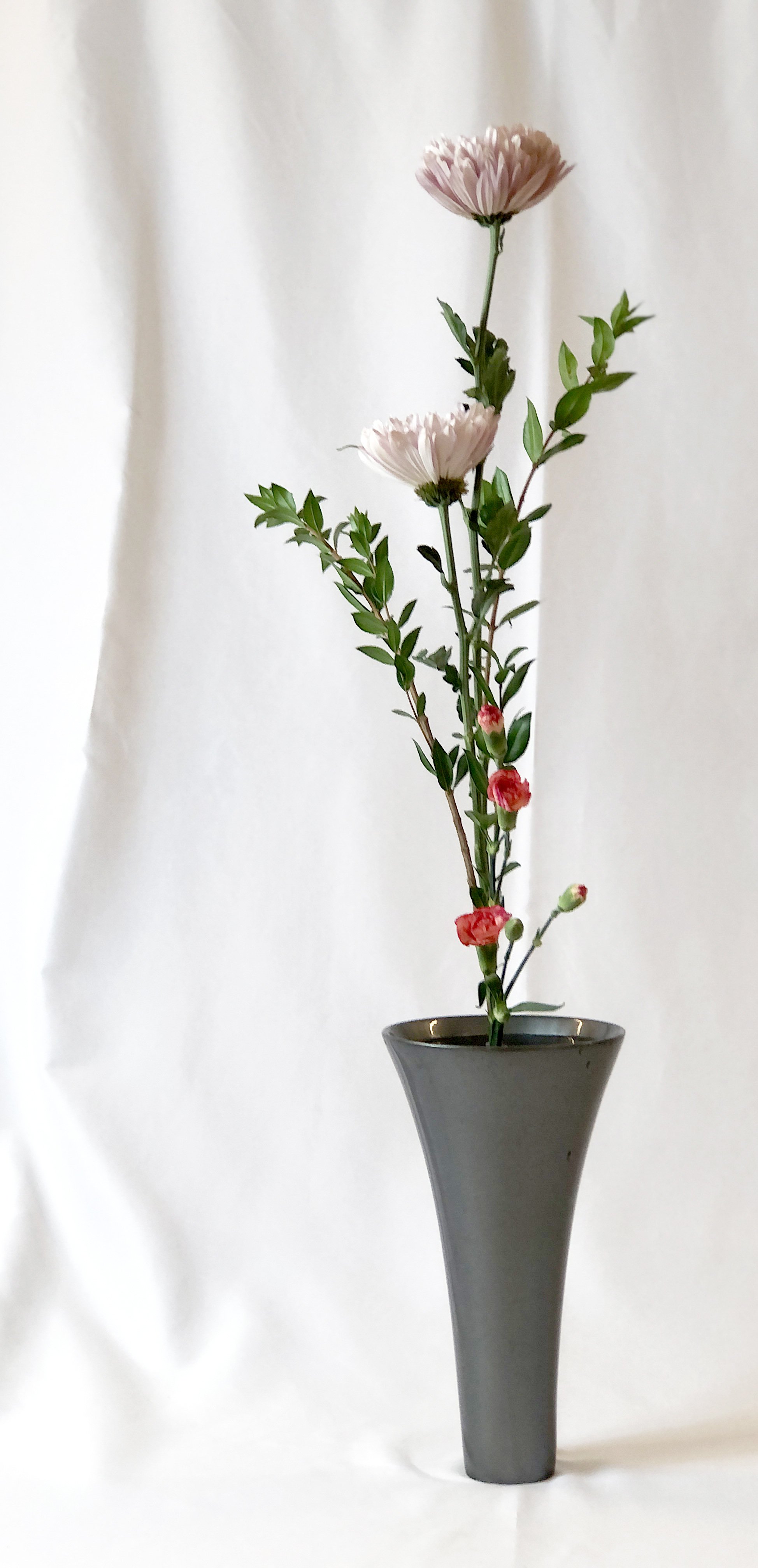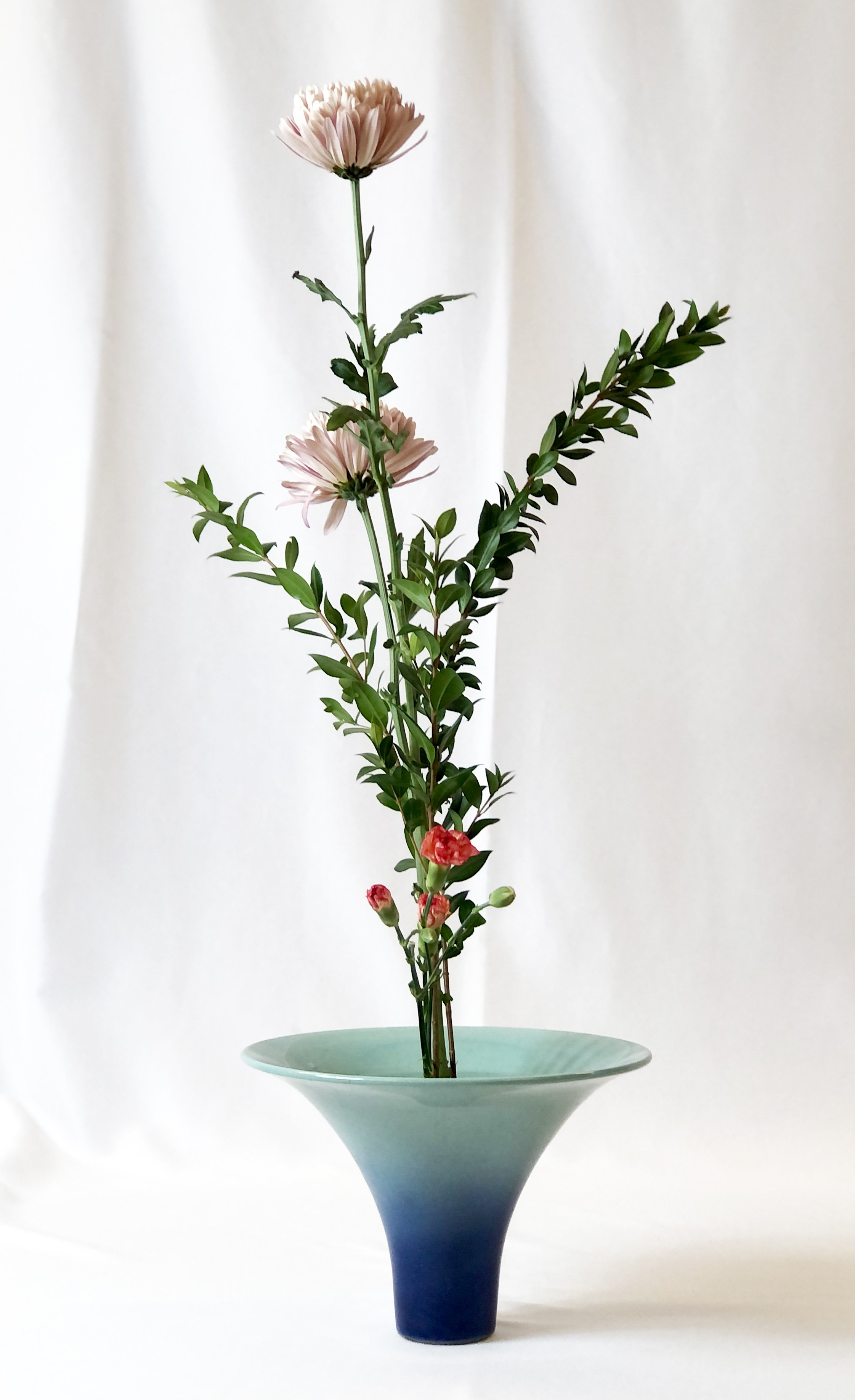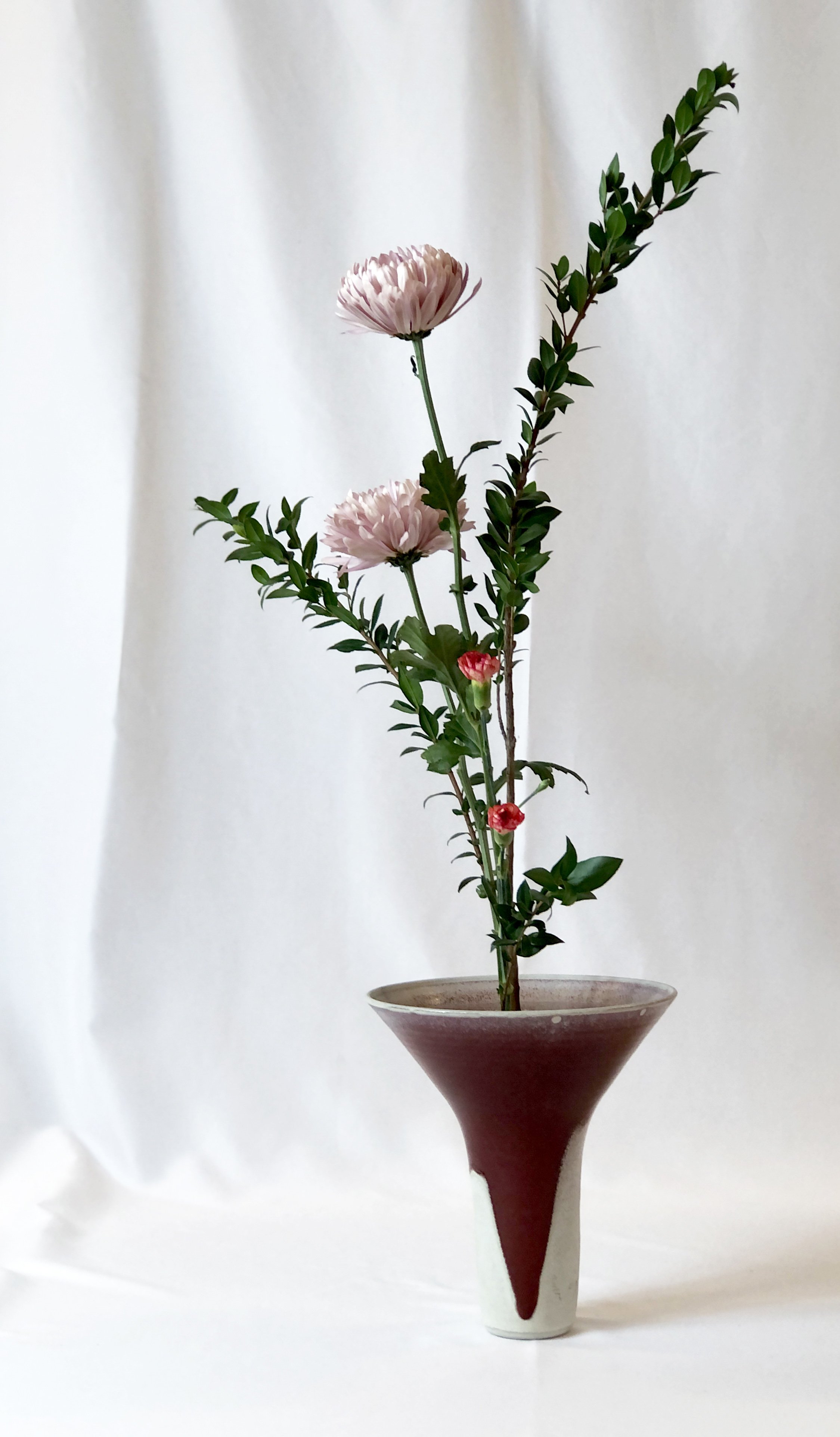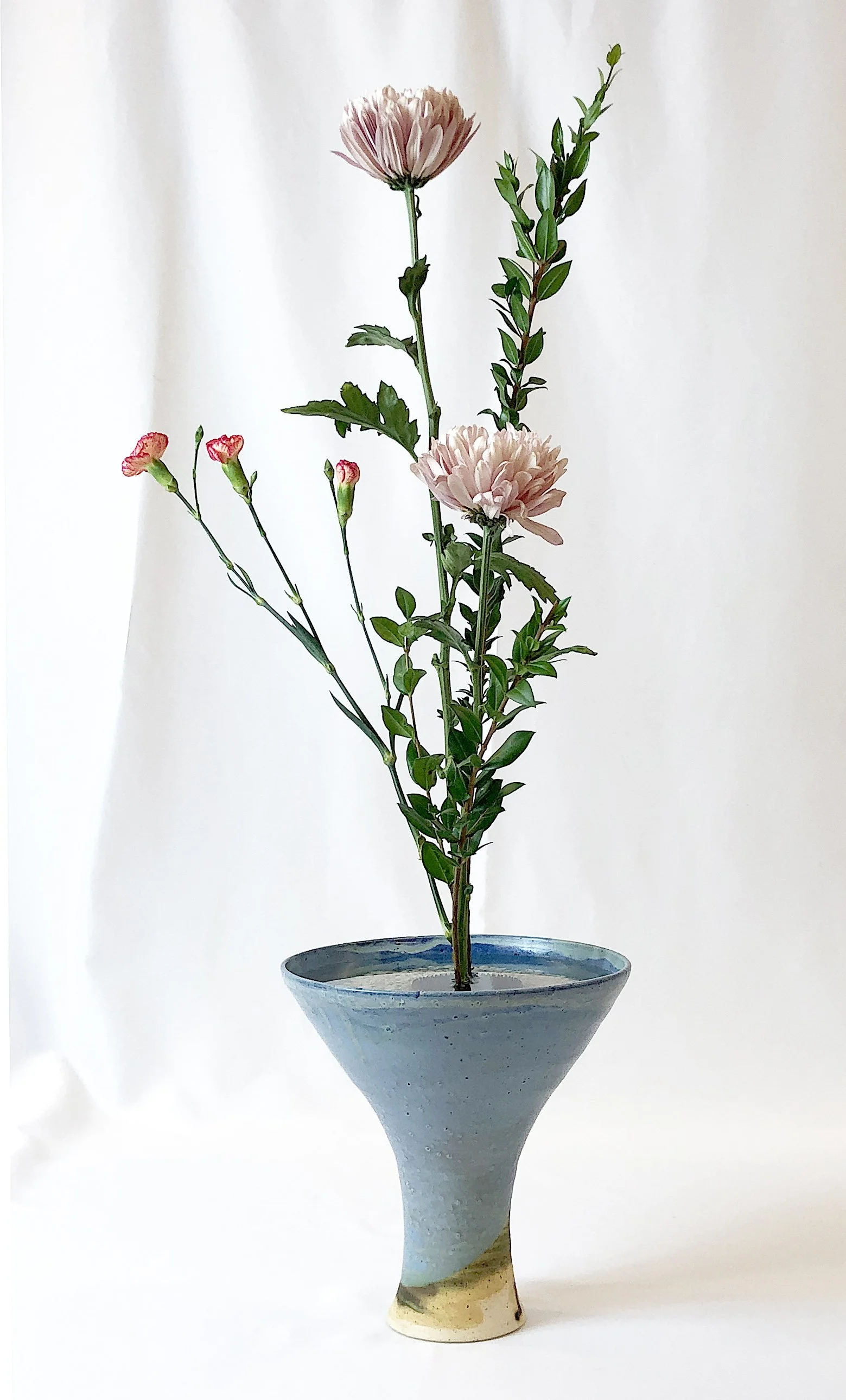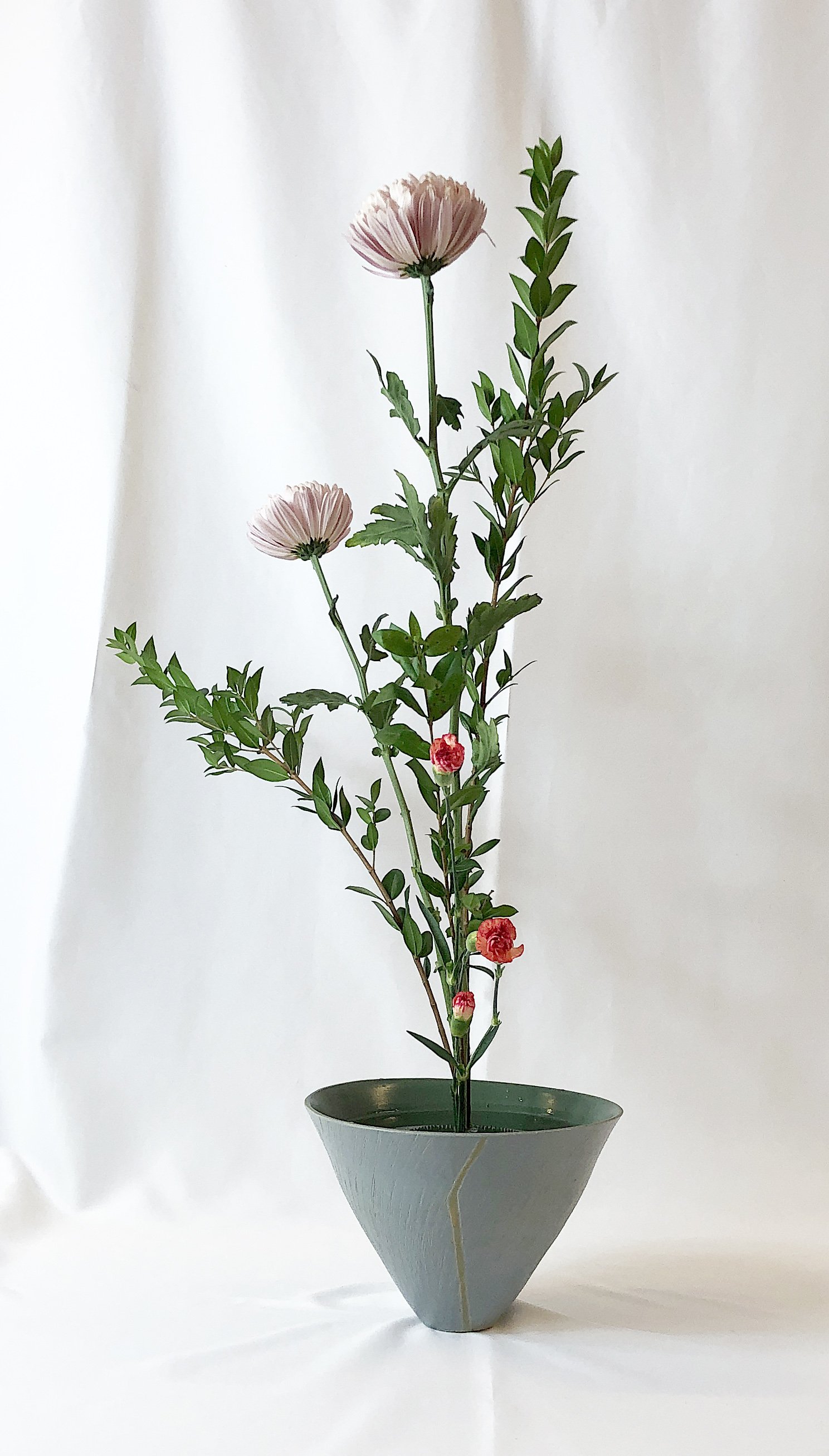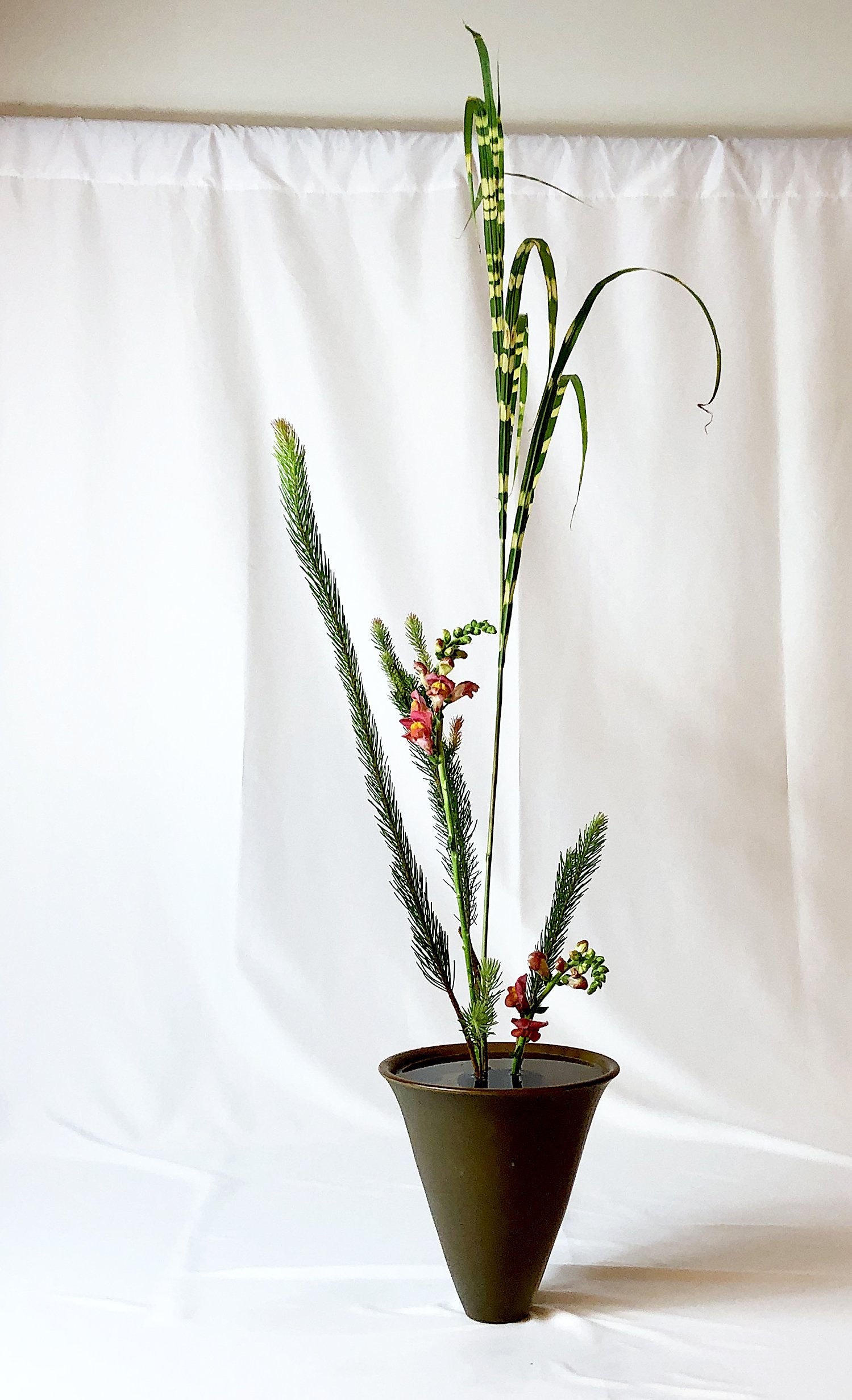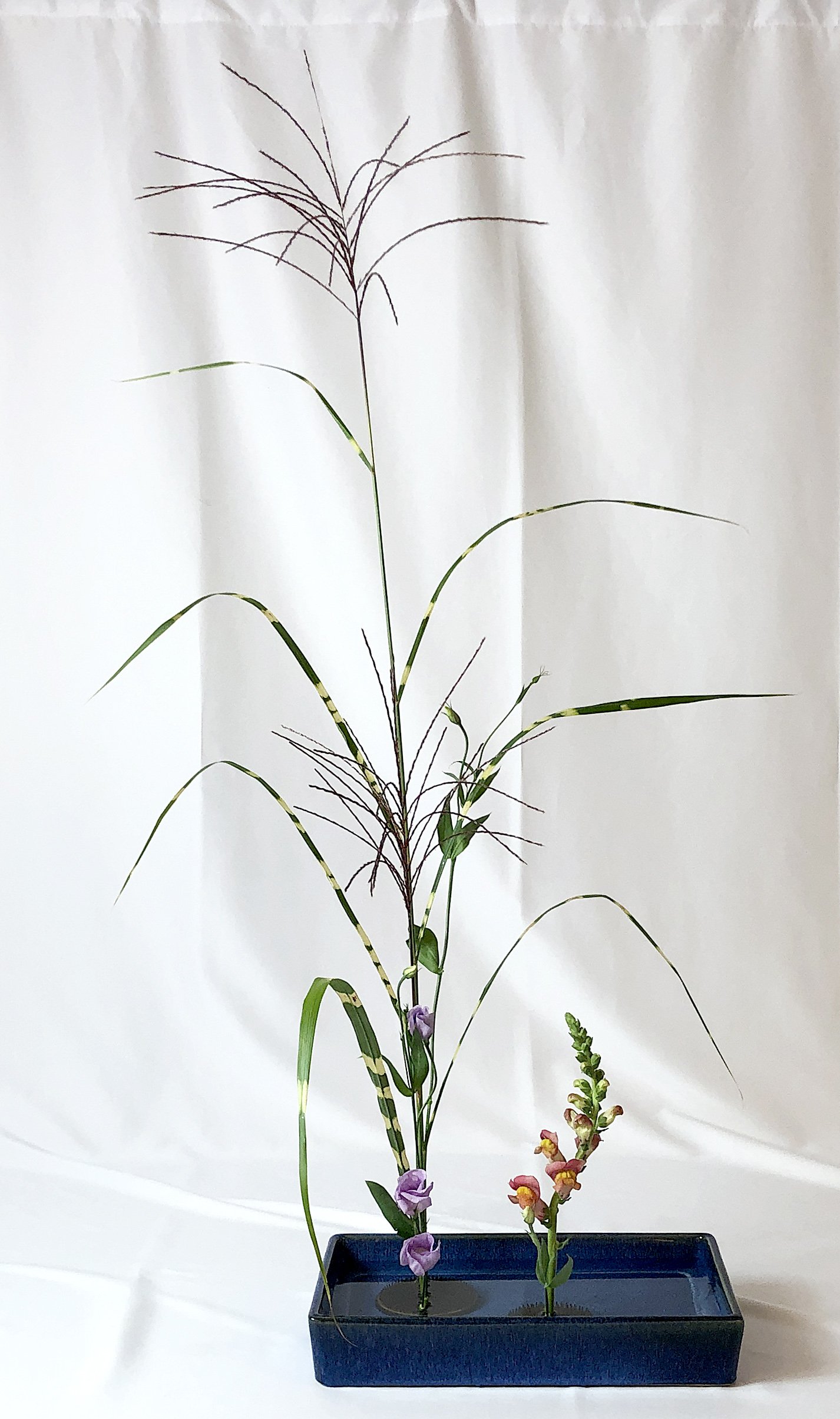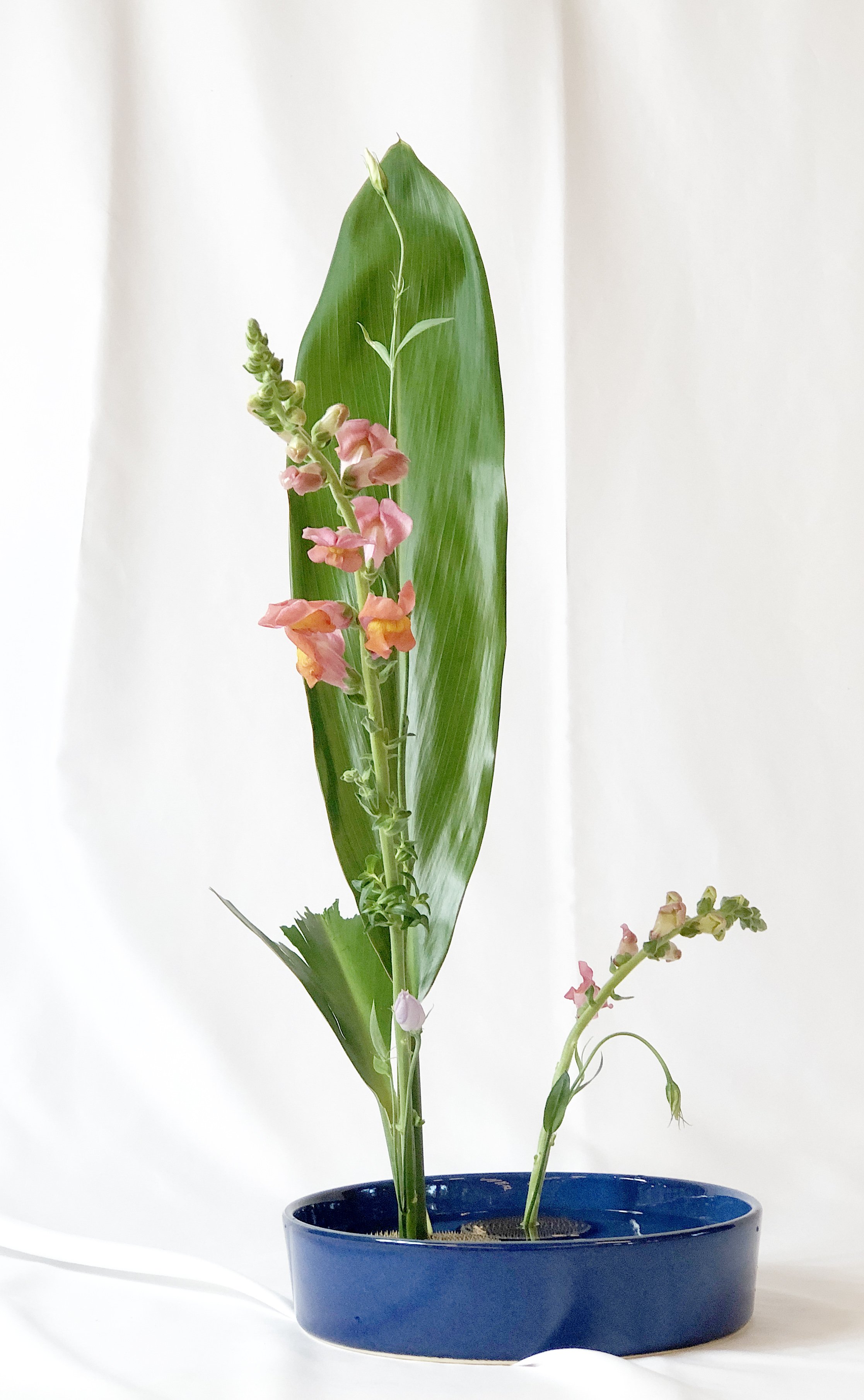Professor Mariko Suzuki: Two Day Shoka and Rikka Shimputai Workshops
Visiting Professor: Mariko Suzuki, Kyoto Japan
Professor Suzuki began her studies in 1991. In 2018 she graduated from the Advanced Course at the Ikenobo Central Institute of Ikebana, Ikenobo Headquarters, Kyoto. She then completed the Special Advanced Course in Free Style at the institute in 2021. She has since completed the Advanced Course in Classical Rikka at the institute.
For the October 12 workshop, Professor Suzuki instructed the society in the history of rikka as well as guiding us in creating a Rikka Shimputai
Rikka Shimputai - Modern Rikka
Rikka is the oldest style of ikebana, established in the Muromachi Period (1338-1573). Traditional rikka shofutai typically consists of 7 or 9 yakueda (main parts) which work together to create harmony and depict a natural landscape. Current Ikenobo Headmaster Sen'ei Ikenobo introduced rikka shimputai in 1999 as rikka more suited to modern lifestyles and living spaces. Whereas rikka shofutai has a traditional form, rikka shimputai has no set form and is a more modern, dynamic arrangement expressing movement and feeling over structure.
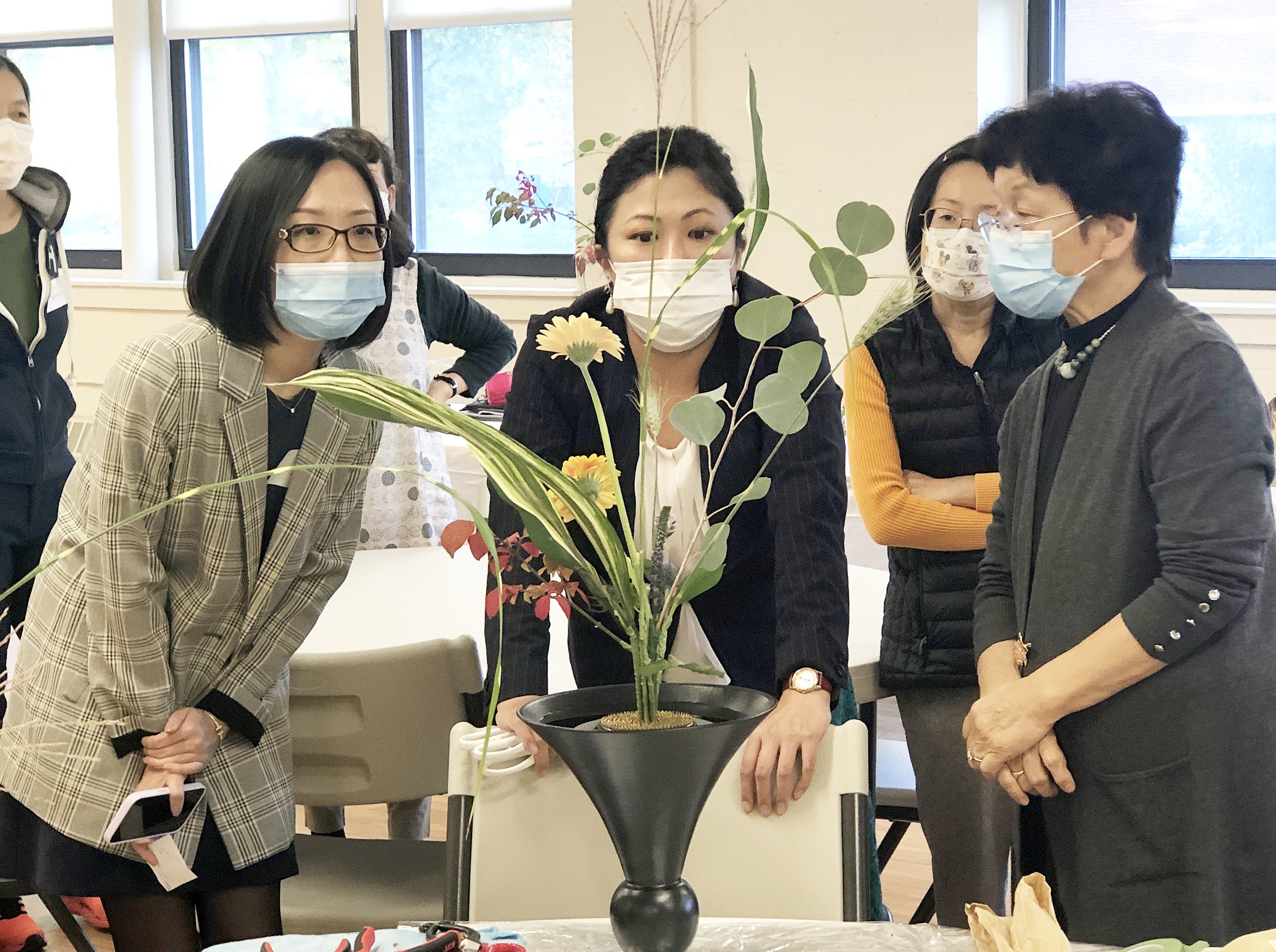
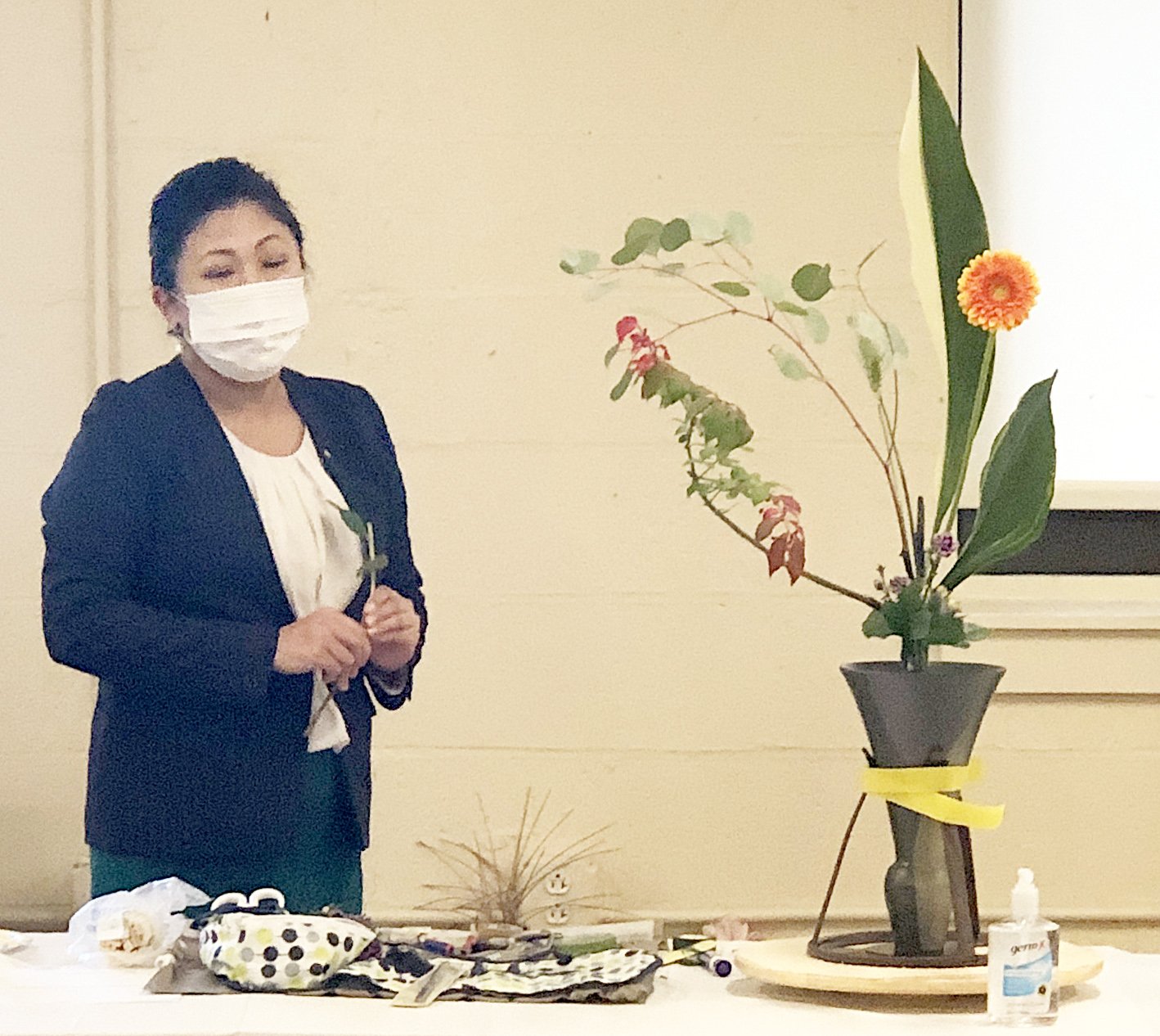
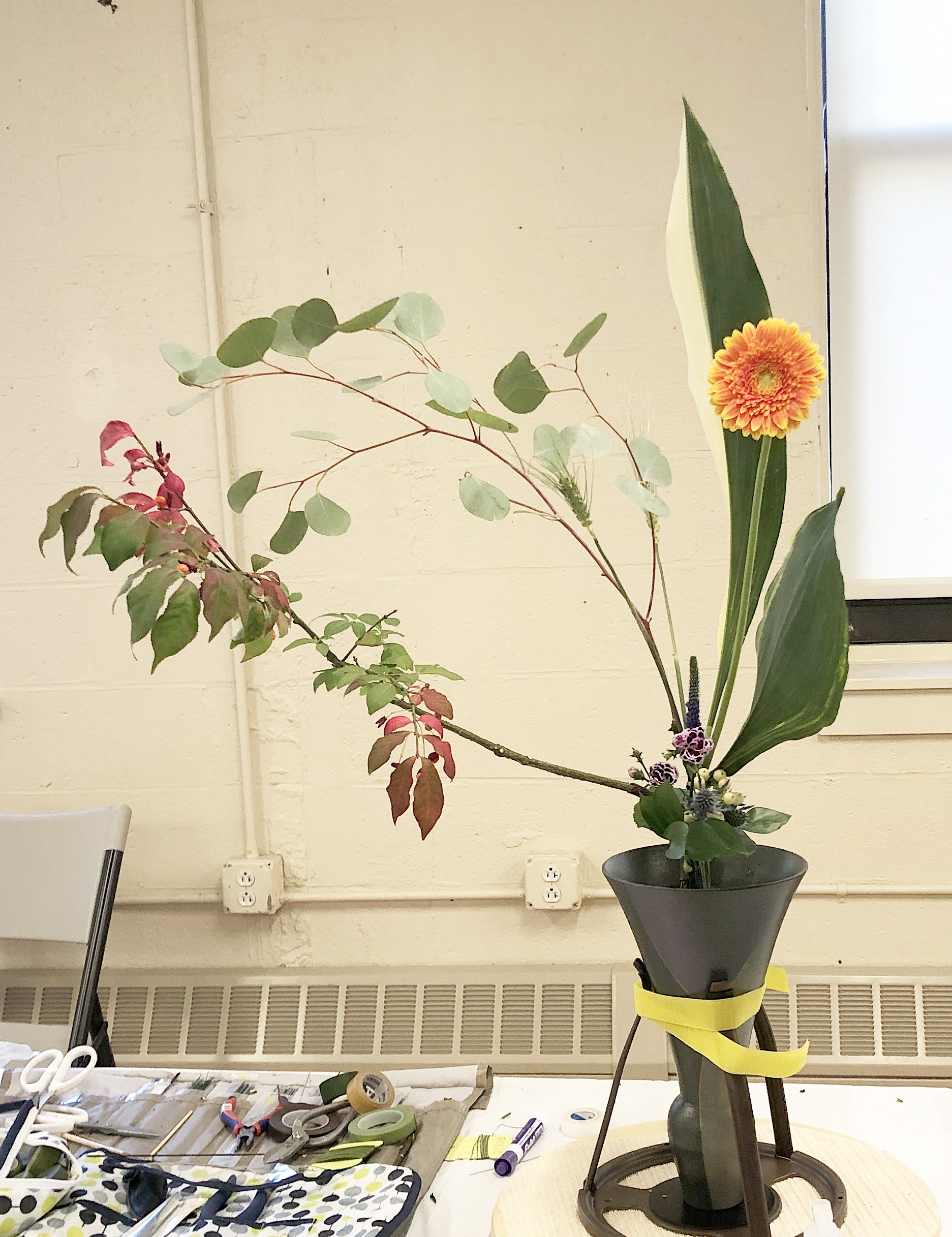
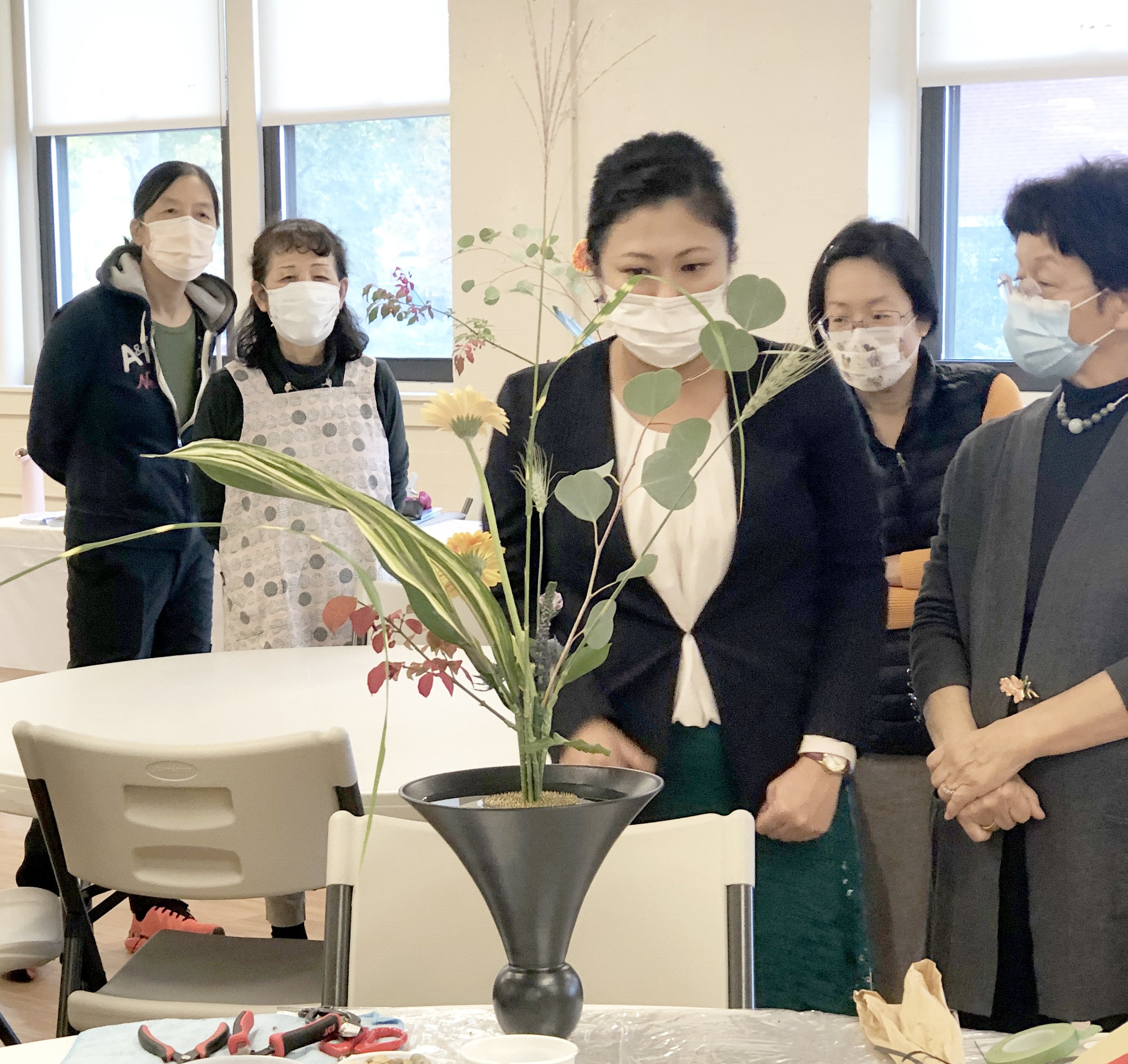
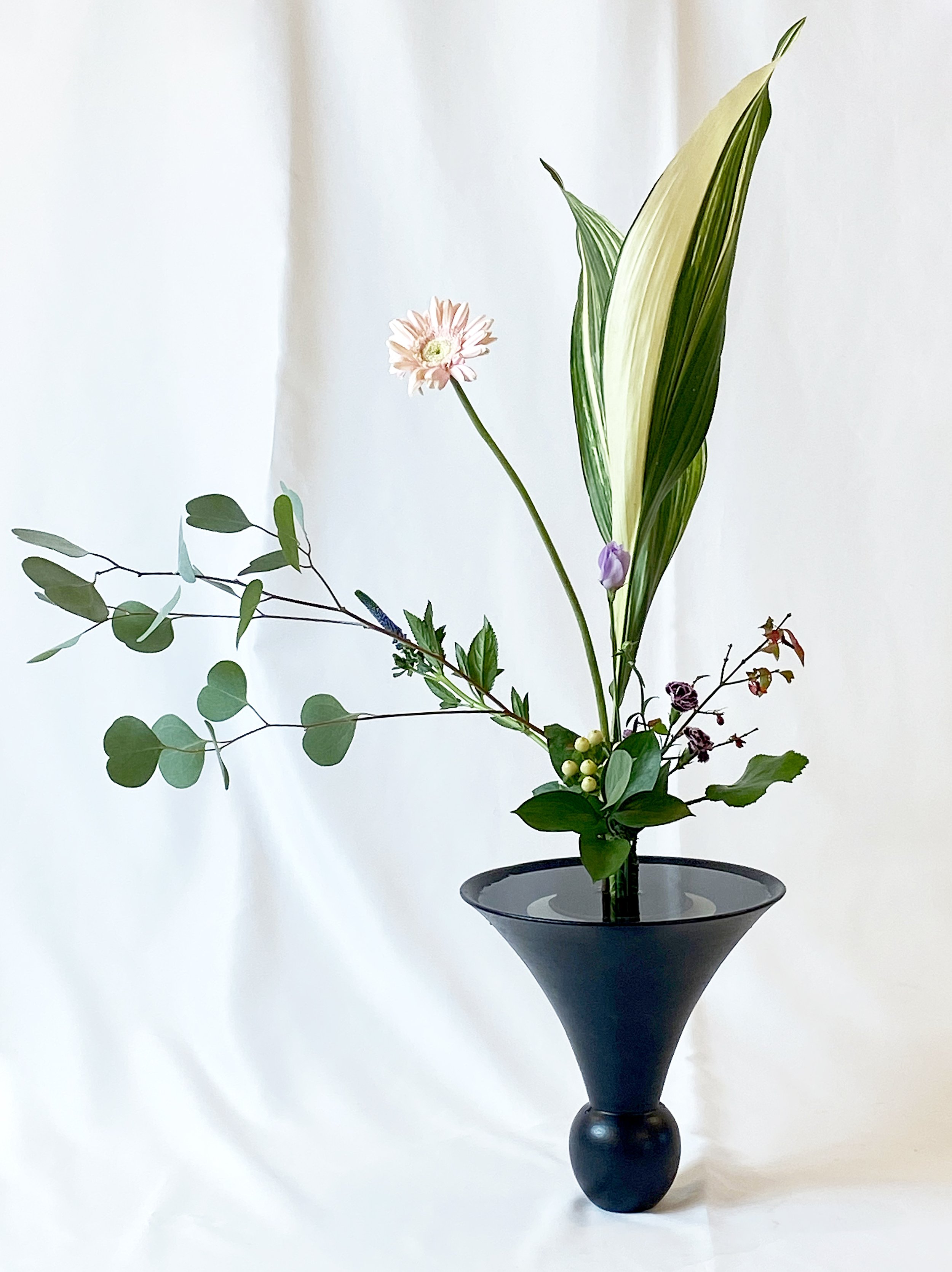
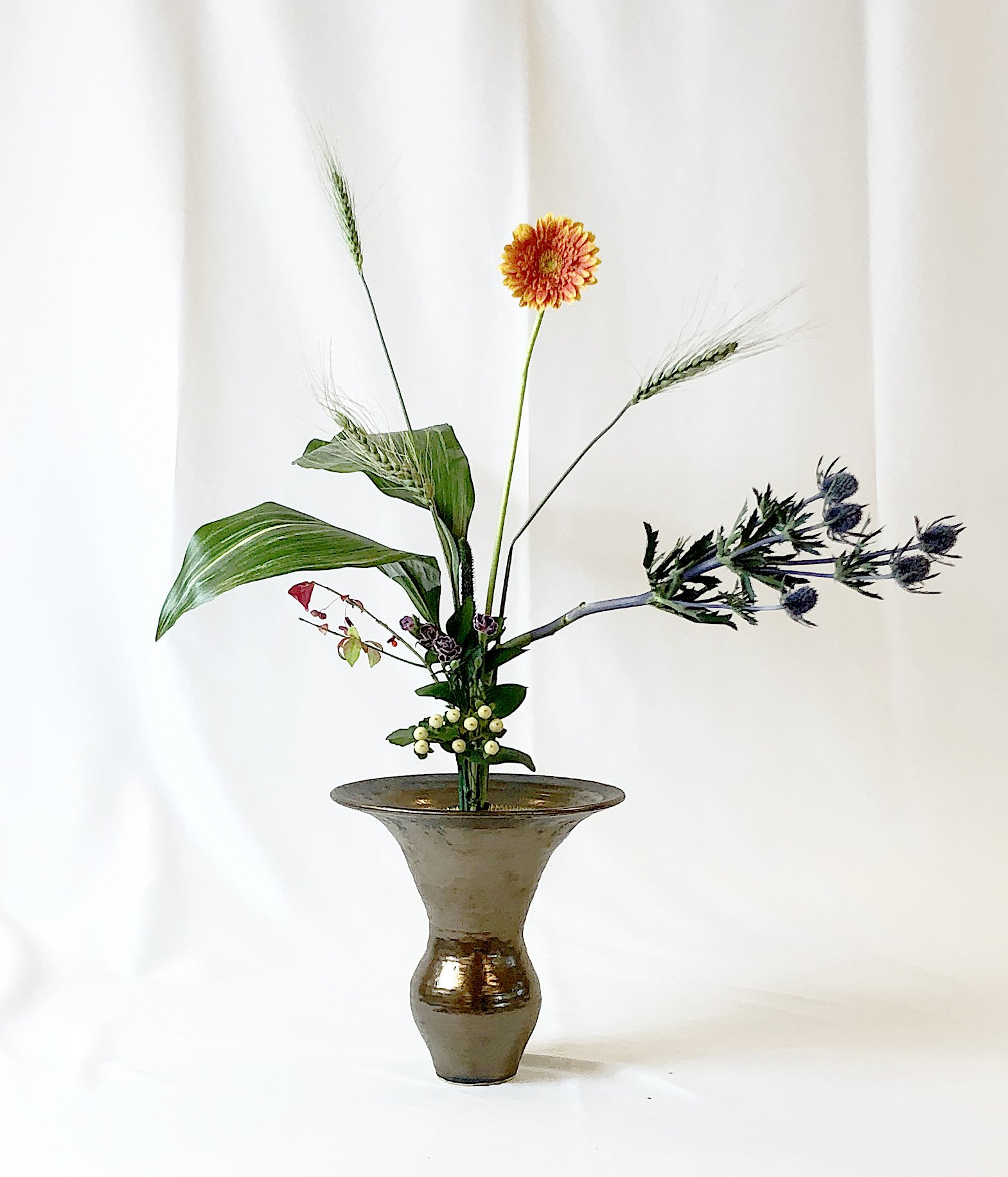
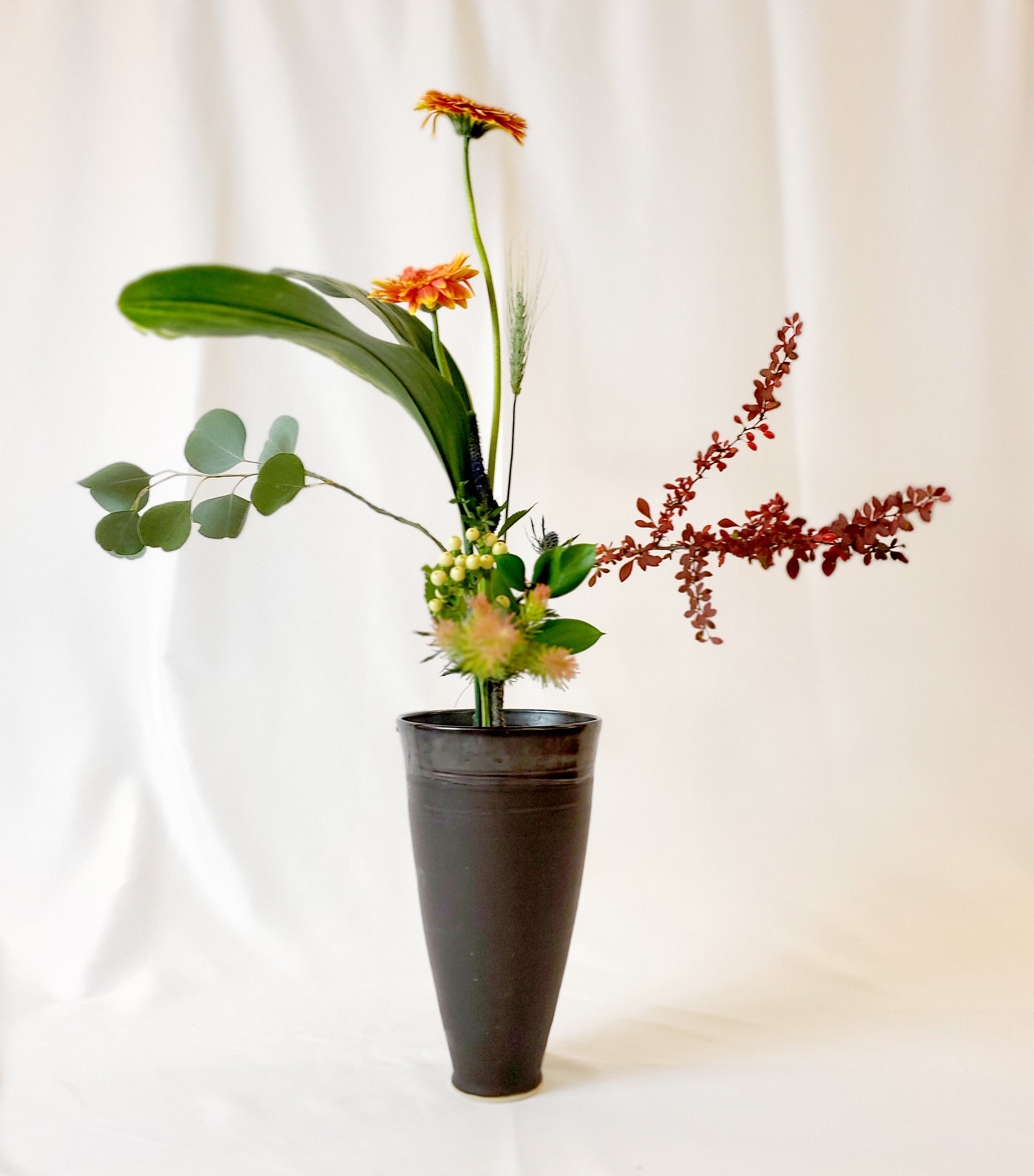

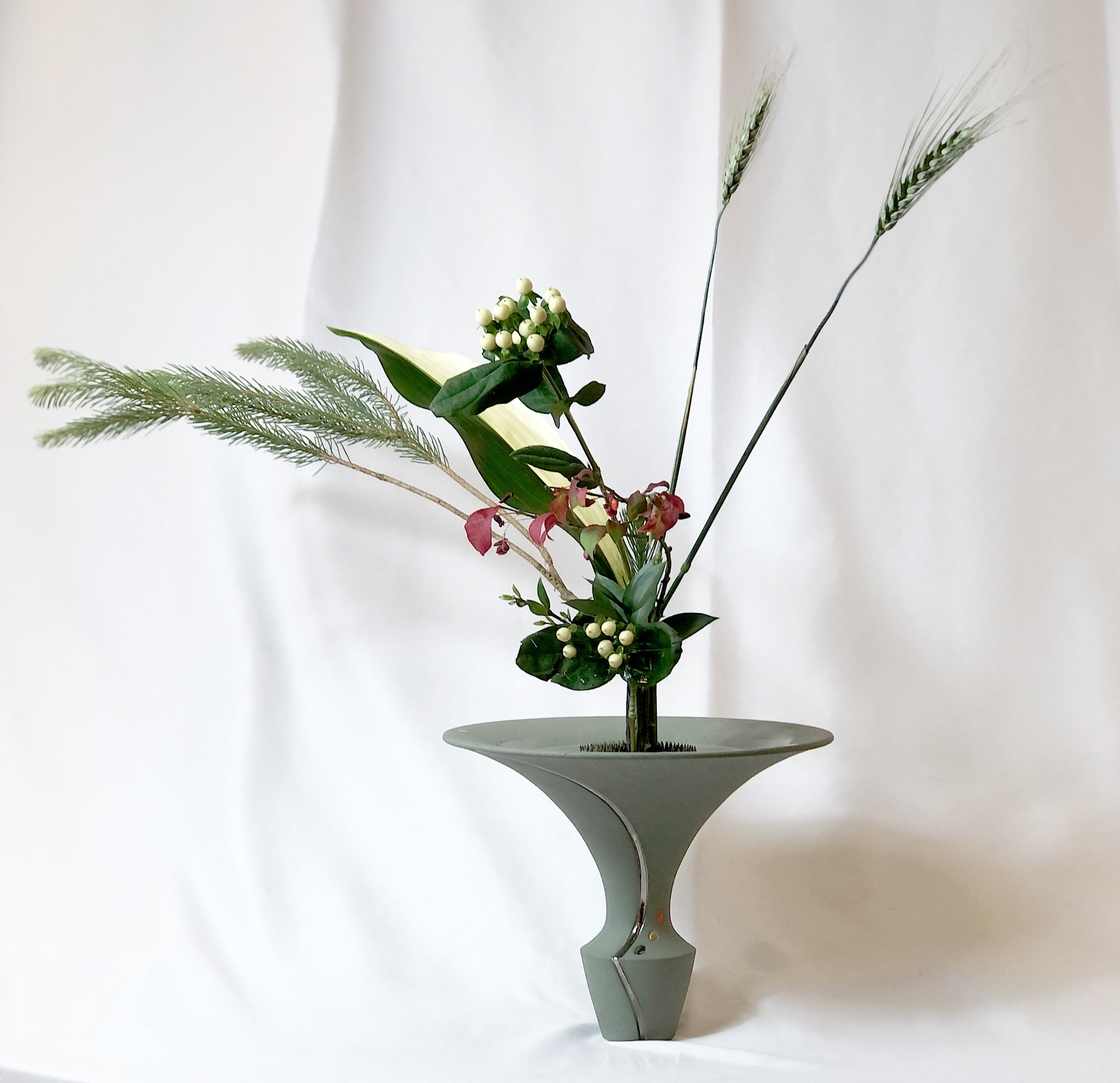
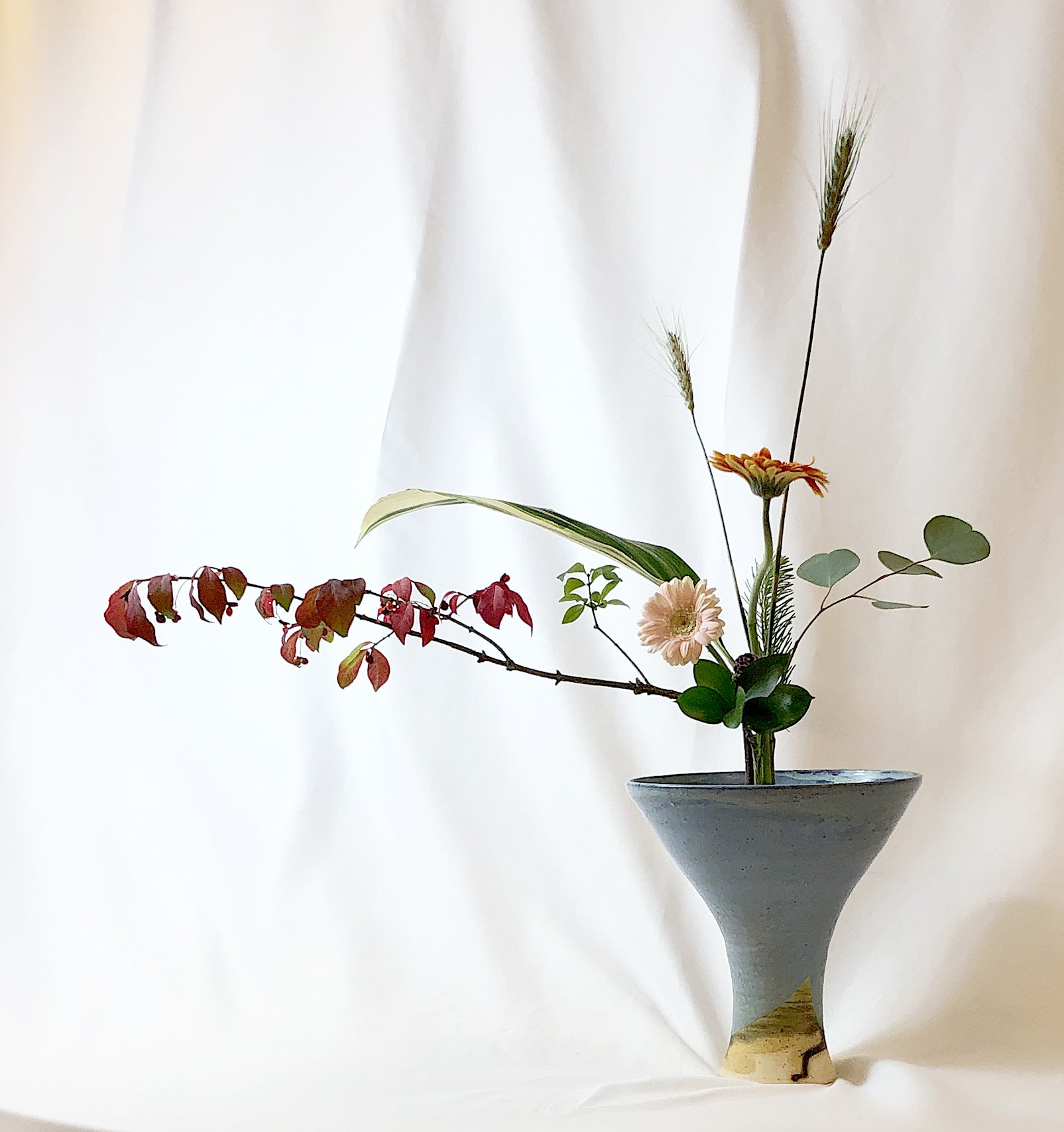
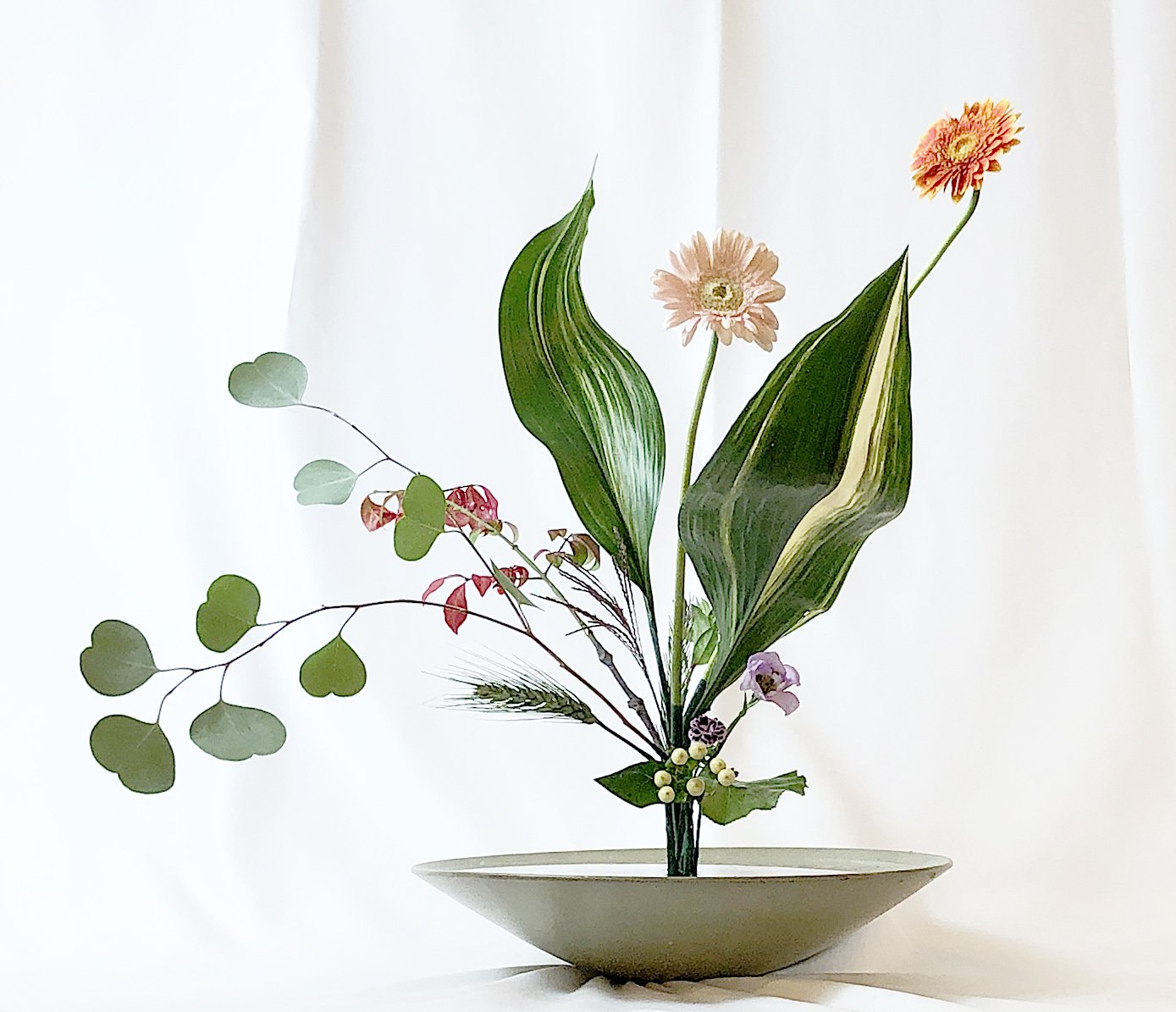
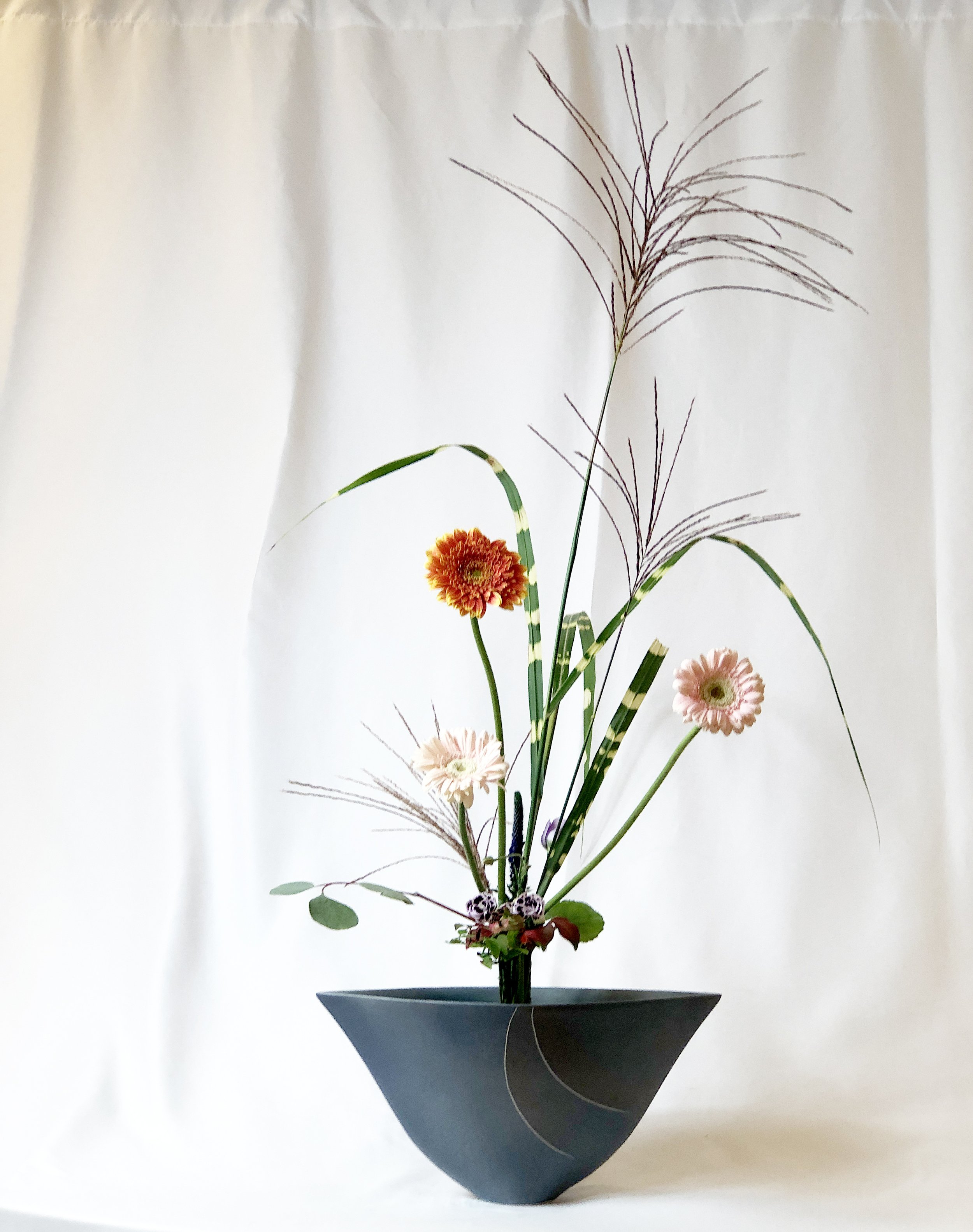
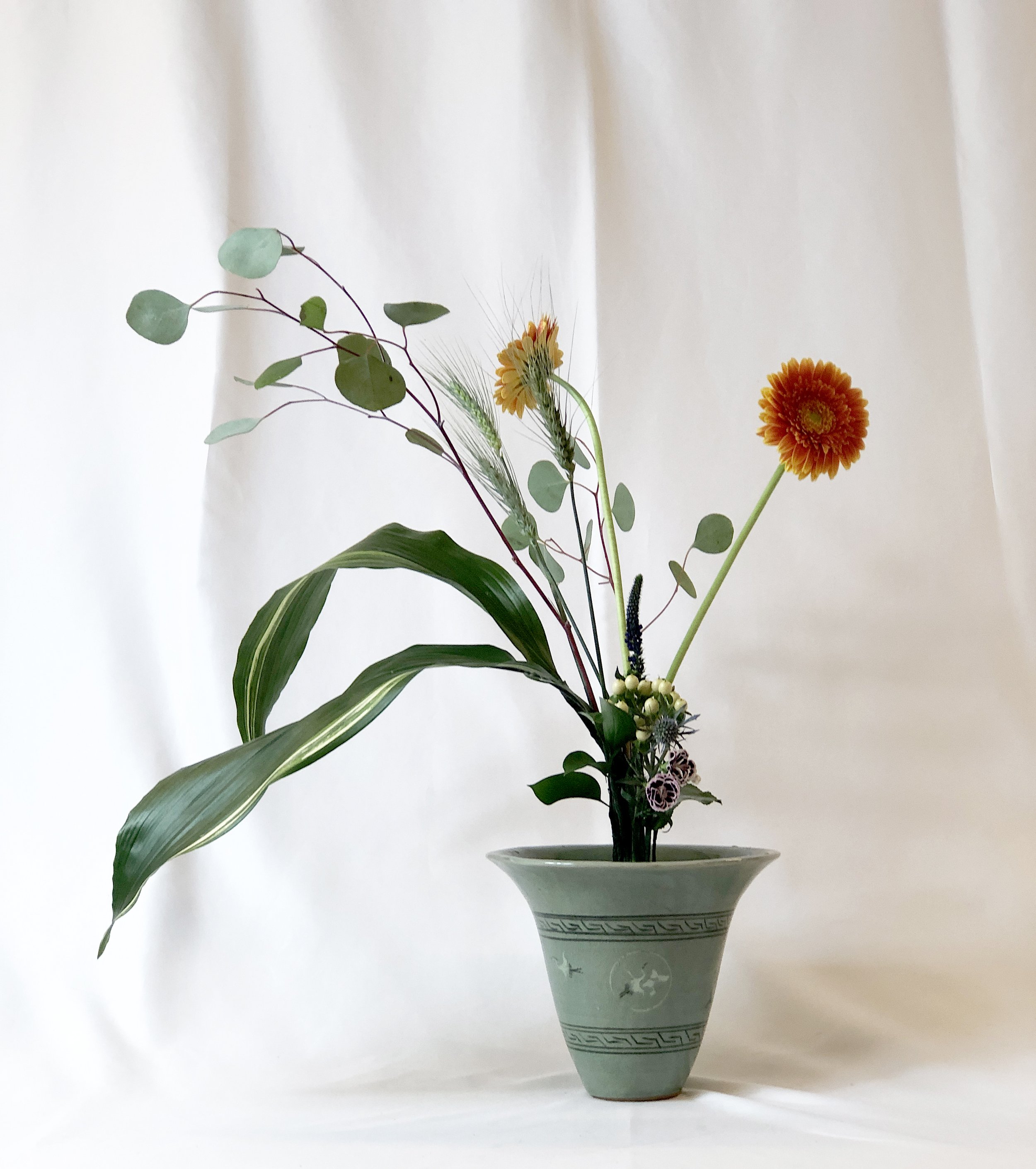
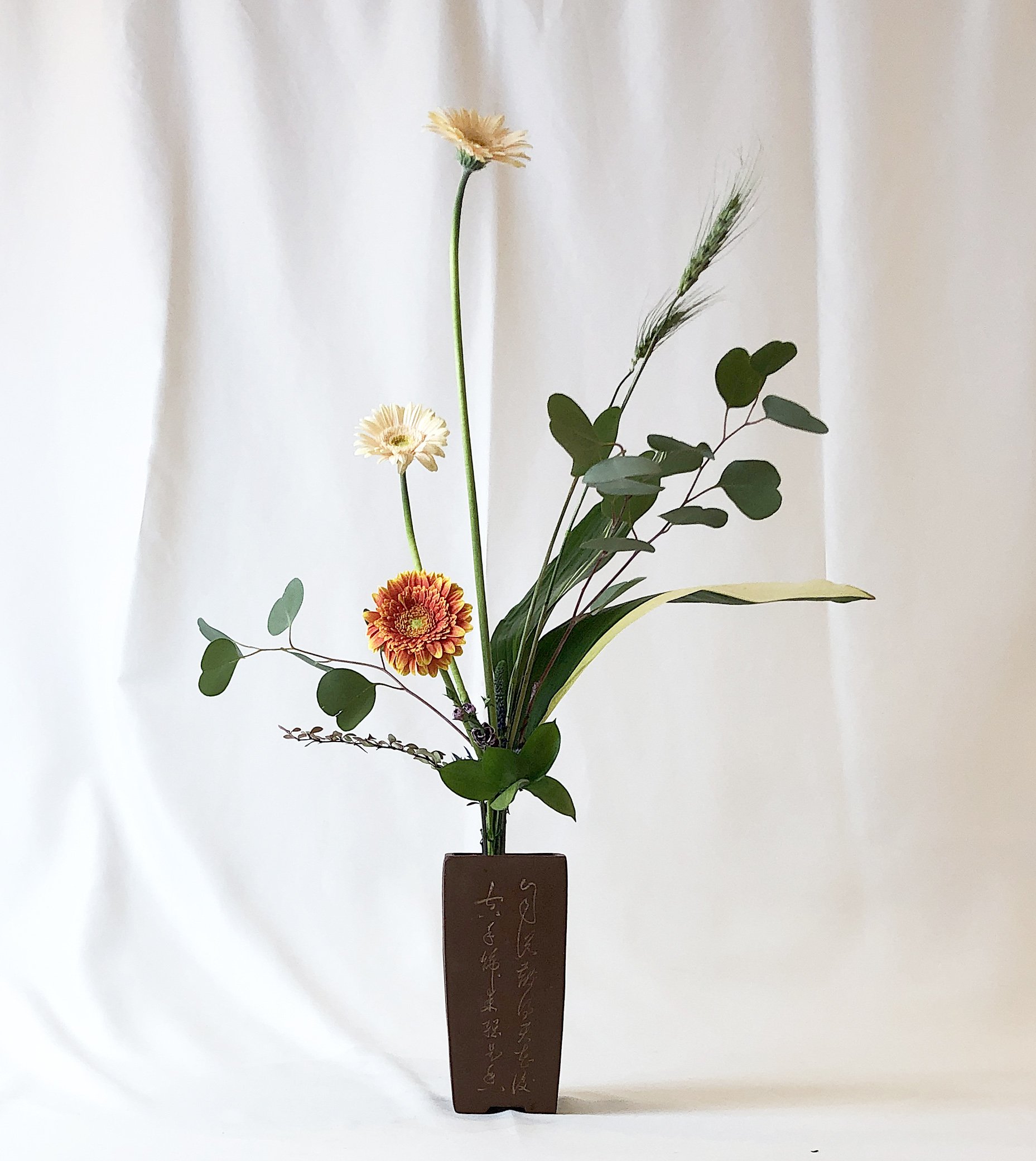
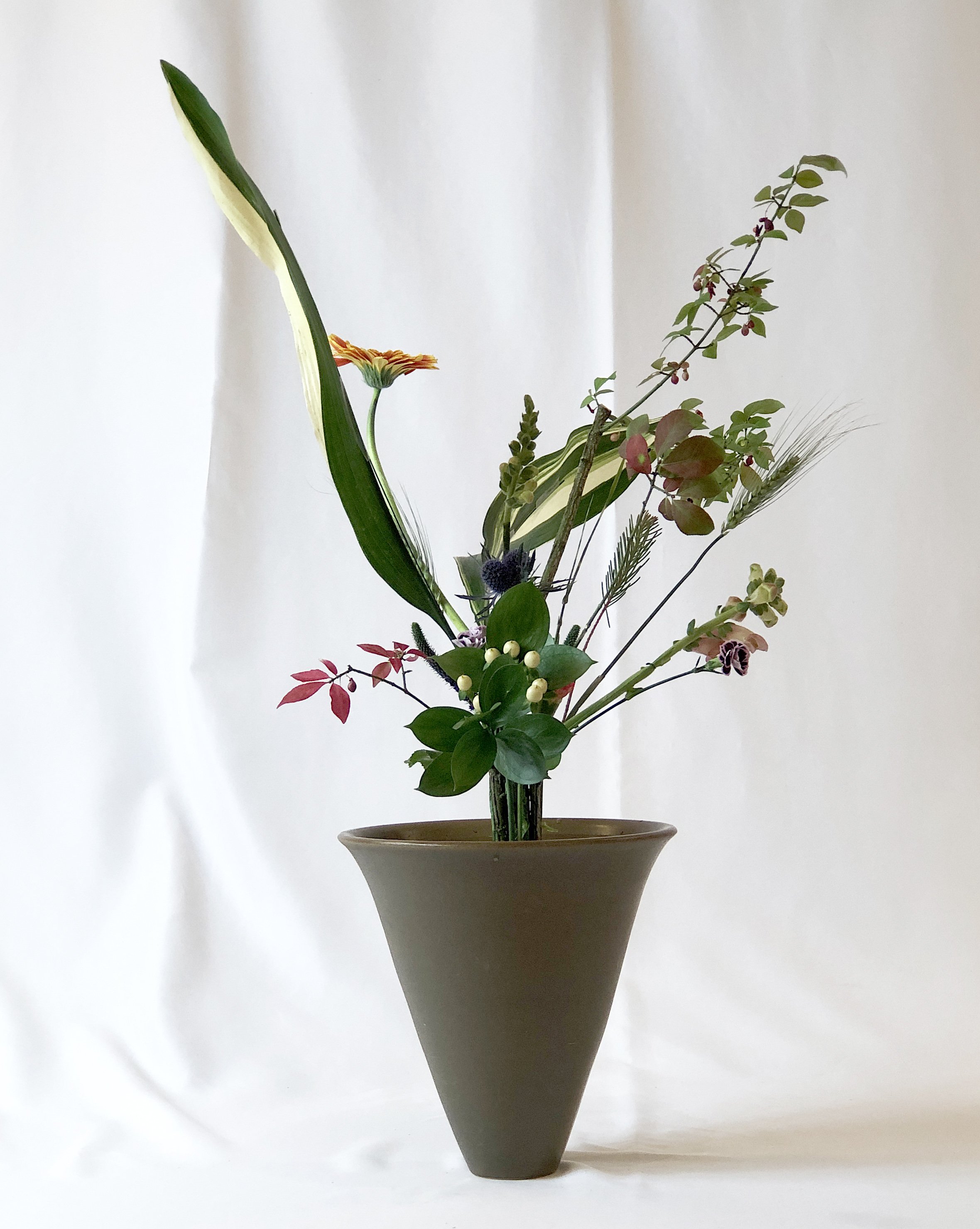
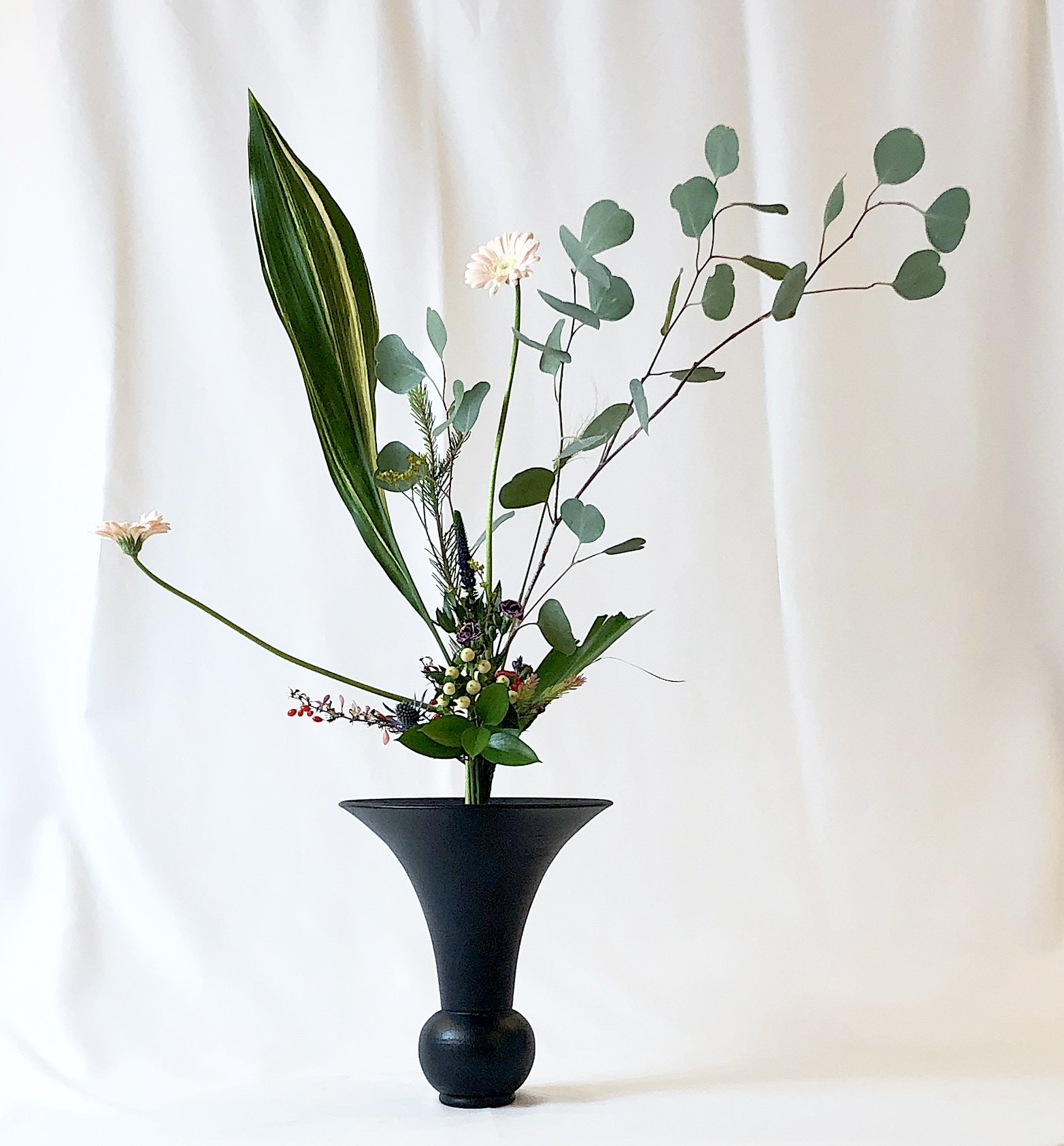
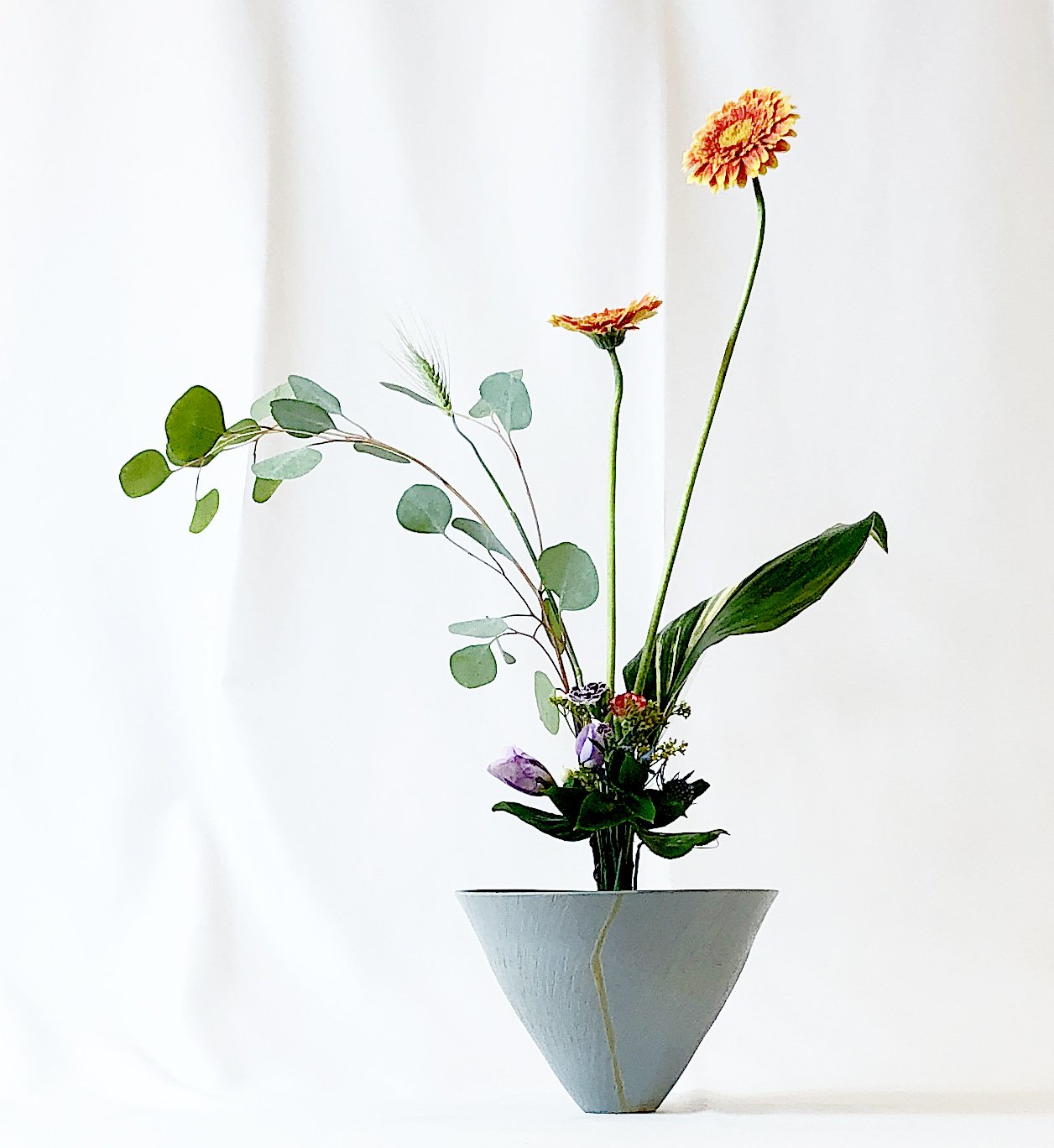
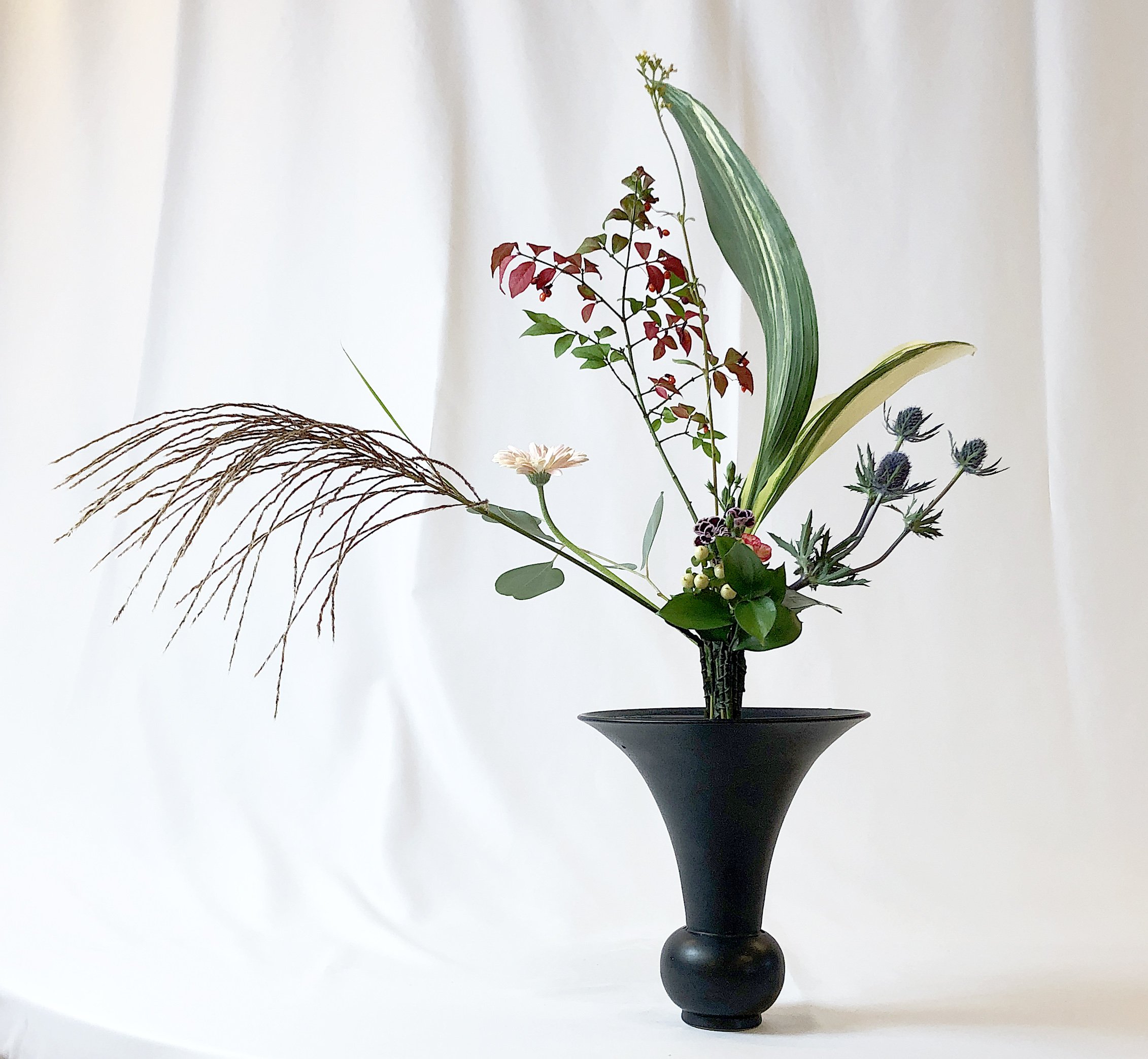
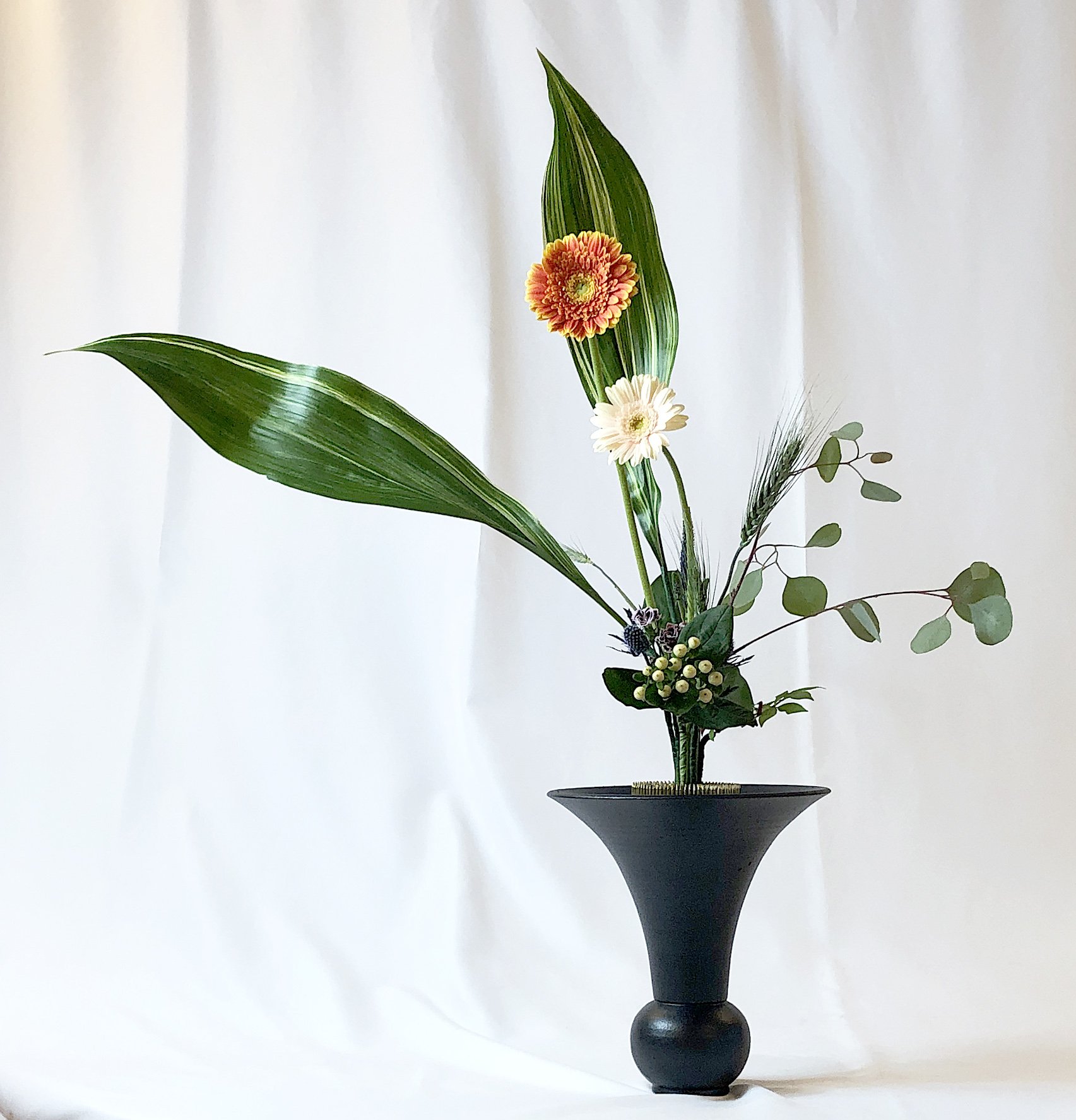
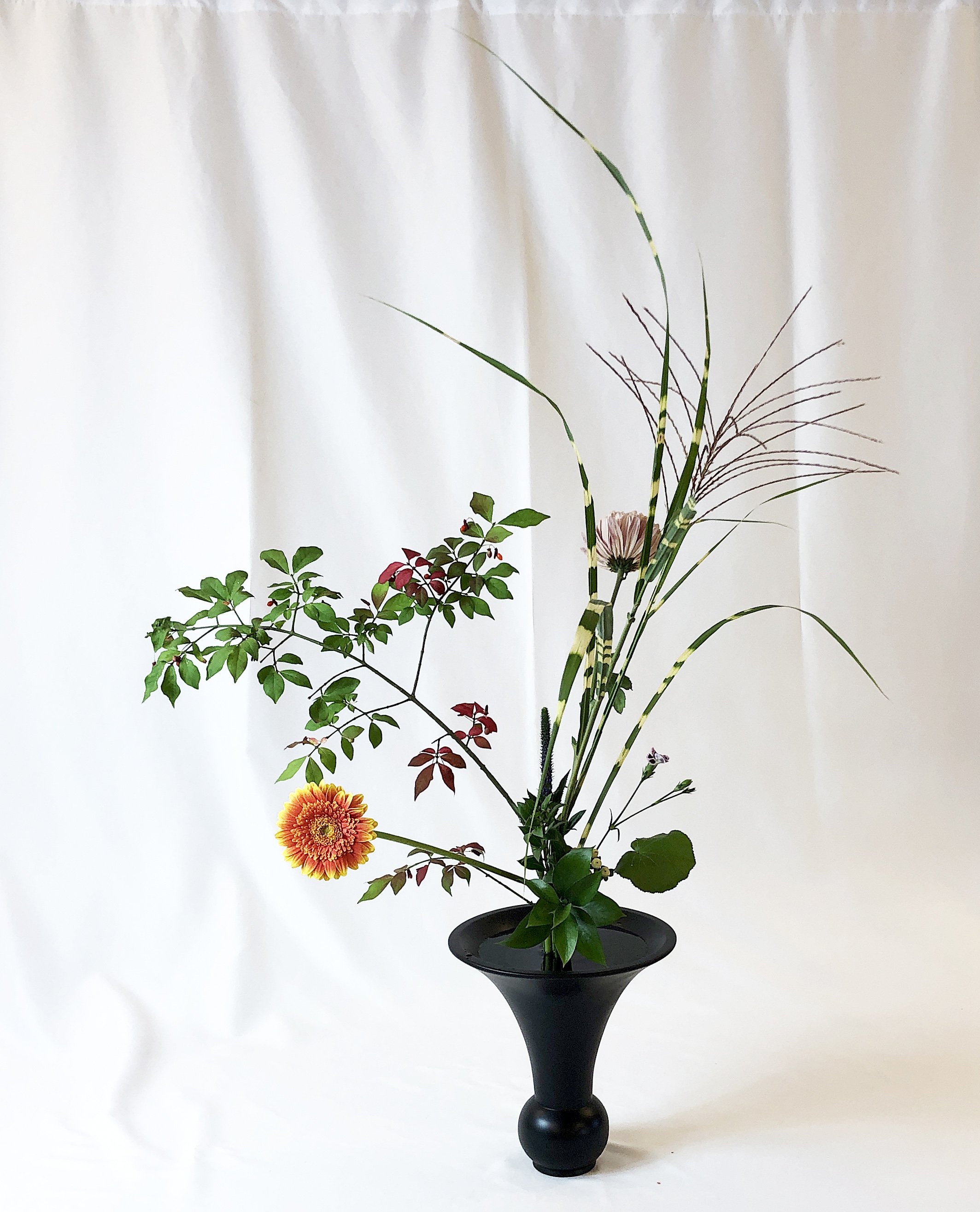
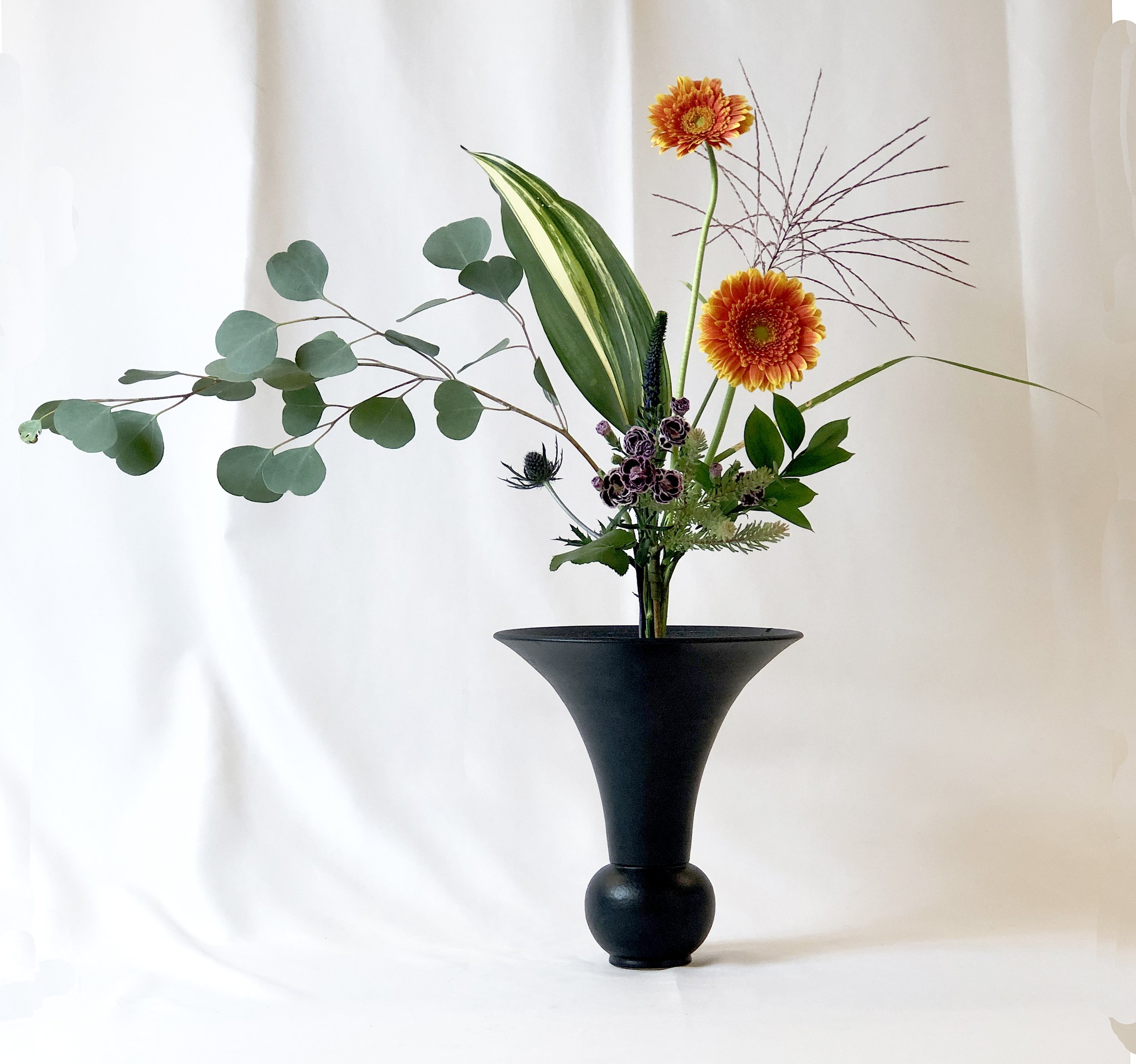
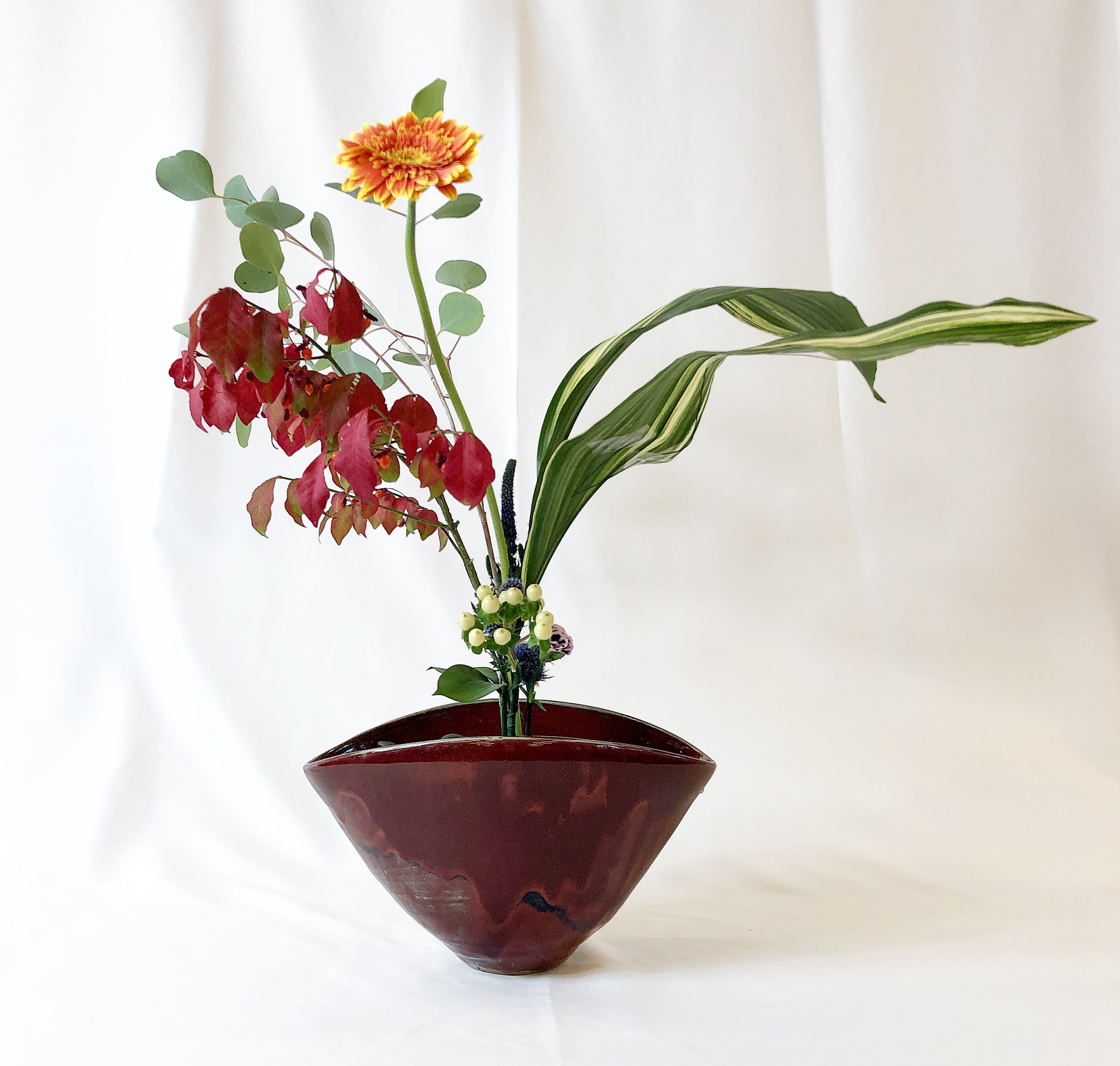
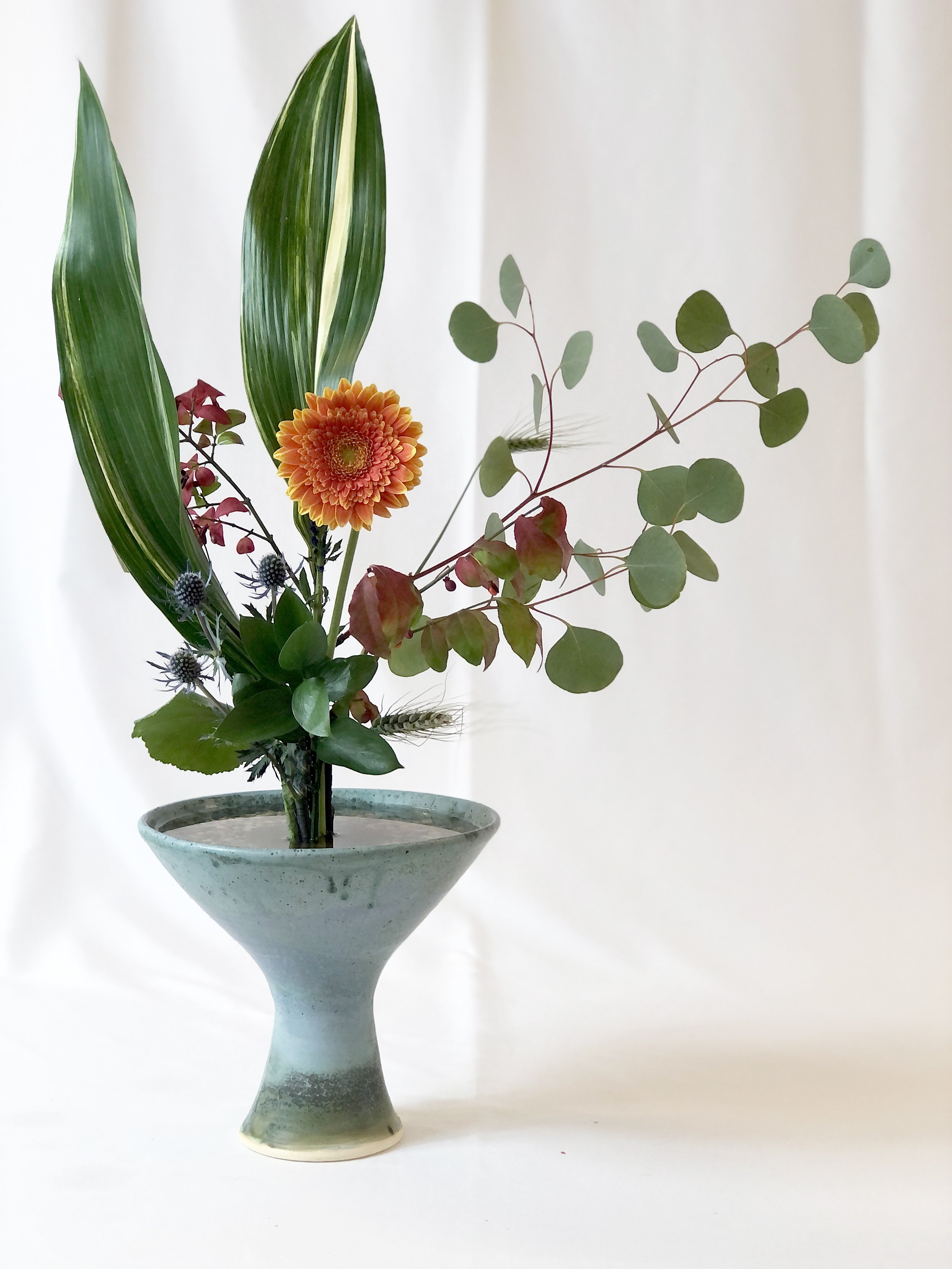

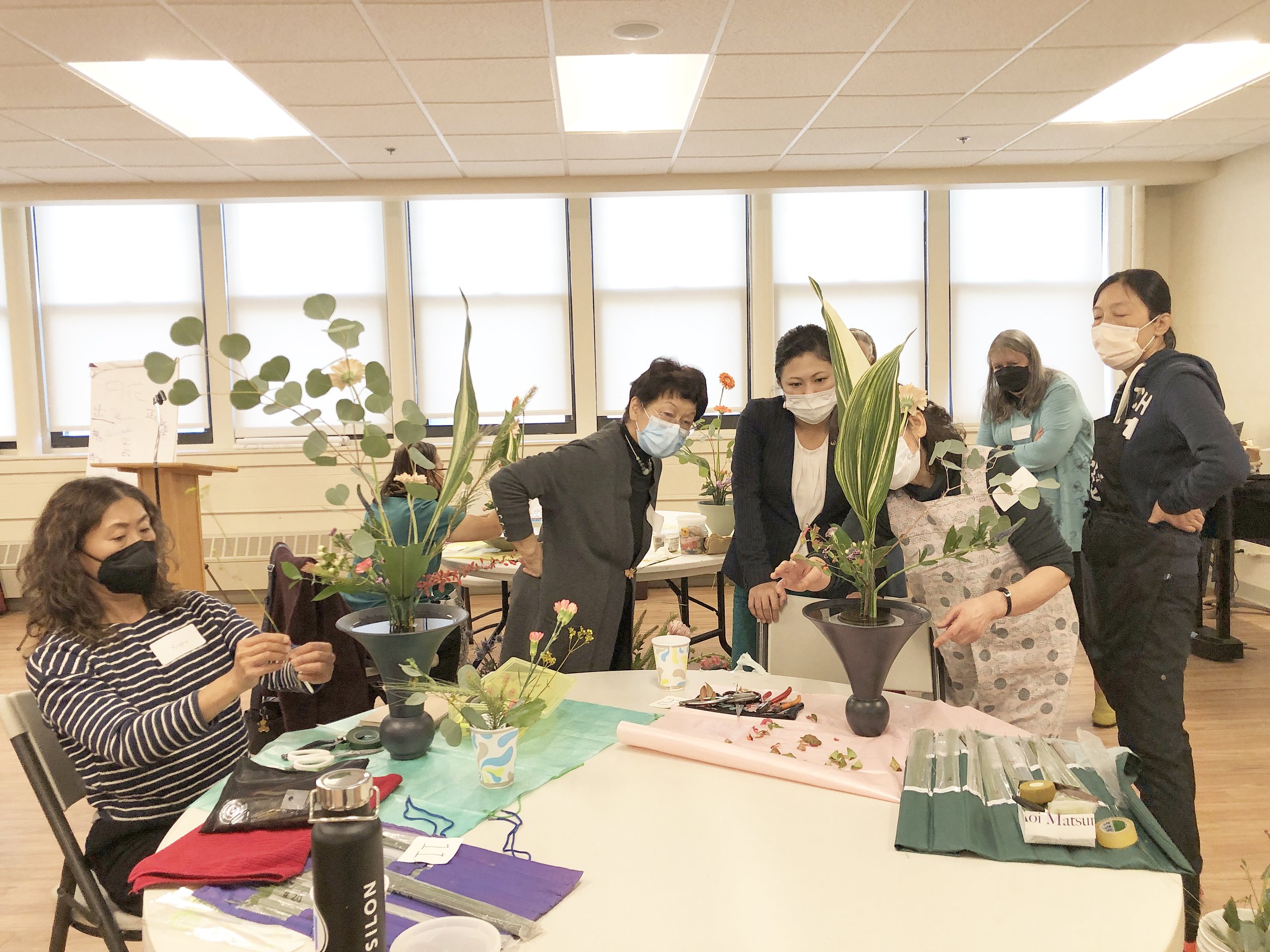
Shoka Sanshuike is a modern shoka style which uses three kinds of floral material in its arrangement. It is brighter, more colorful, with a greater sense of space and volume than either isshuike (one material) or nishuike (two materials). Whereas isshuike and nishuike emphasize the beauty of natural order, sanshuike does not require that same focus, e.g. tree material may be inserted in front of grass material. And, whereas land and water materials are not mixed together in nishuike, they may be used together in sanshuike. Shoka containers should have an opening at the top that is wider than the base, and the top rim should be flat and even.
Shoka Shimputai is a modern shoka. Traditional shoka shofutai was established during the Meiji Period (1868-1912) and focuses on shussho, the inner character and beauty of a specific plant. The arrangement may have one to three types of floral materials in its composition depending on the design (isshuike, nishuike, or sanshuike). In 1977, Sen'ei Ikenobo, current Headmaster of the Ikenobo School, created a new modern form of shoka, shoka shimputai, in which materials of different character, contrasting colors, shapes, and textures are arranged together to create harmony or wa. The intent was to introduce a style that lent itself to modern lifestyles and to make use of a greater variety of available floral materials. Whereas shofutai evokes structure, shimputai evokes feeling.
